








Welcome to the summer 2022 edition of The Geographer. With Scotland’s census under way, and in response to letters from members, it felt like a good time to look at the general issue of population, to help us understand some of the big global trends and the pressures and policies this impacts. With ever-increasing population forecasts, it remains a key consideration in many geographical issues, and is a factor in everything from pandemics to sustainability.
At the last census, in 2011, Scotland recorded its highest population ever, at 5,295,403 people. Within this figure, the number of people over the age of 65 exceeded the number of people under the age of 15 for the first time, underlining an ageing demographic, typical of many modern western countries. With a domestic population that was almost static between 2001 and 2011, most of the growth in population was attributable to immigration, which sat at around 6% of the population. Scotland, like many countries with ageing profiles, faces the problem of how to maintain services and economies if so few people are of working age, and is reliant on immigration to tackle this, at least in the short term. And whilst consumption remains the primary driver of worsening climate change, a burgeoning global population also plays a clear and significant role. What are the current trends in population? How do we minimise this impact and reduce this pressure? How do economies work with increasingly ageing populations? How does migration impact, especially when this is more likely in a climate-stressed world? And what is the outlook for Nature? This is especially pertinent with the United Nations Environment Programme’s Stockholm+50 event reflecting on the past 50 years of environmental efforts, and in the run-up to UN COP15 on biodiversity in Kunming later in 2022. And of course population is affected by war. With the awful invasion of Ukraine by Russia, we wanted to take a moment to reflect on the response from the geographical community and to express our sympathy and empathy for those affected and displaced. The beautiful front cover image was created by Scottish artist Evie Caldwell, and we are grateful to her for allowing us to use it here. And photographer Nicolas Economou has kindly provided some thought-provoking images of the people of Ukraine.
Alongside all of this, we have interviews with two of our newest postholders: RSGS’s new President, Professor Dame Anne Glover; and the newly-appointed Geographer Royal for Scotland, Professor Jo Sharp from the University of St Andrews. It’s another bumper edition and we hope you will find it informative, insightful and inspiring in equal measure.
Mike
Robinson, Chief Executive, RSGS
RSGS, Lord John Murray House, 15-19 North Port, Perth, PH1 5LU tel: 01738 455050 email: enquiries@rsgs.org www.rsgs.org
Charity registered in Scotland no SC015599
After serving as RSGS President for ten years, Professor Iain Stewart has now passed the baton on to Professor Dame Anne Glover, whom we are delighted to welcome to the role. Dame Anne is a biologist and academic, holding senior positions at the Universities of Aberdeen and Strathclyde, and is a previous President of the Royal Society of Edinburgh. She served as the first Chief Scientific Adviser for Scotland (2006 11), and as Chief Scientific Adviser to the President of the European Commission (2012 14). Throughout her career, she has demonstrated how to take scientific knowledge from the laboratory to top decision makers and politicians in Scotland and in the EU, and has been a key ambassador for women in science. We greatly look forward to working with Dame Anne as our new President; see pages 38 39 for an interview in which she shares her enthusiasm for the role. And we are delighted that Iain Stewart has agreed to maintain his connection with RSGS by taking on a new position as a Vice-President.
We are delighted to say that our Fair Maid’s House Visitor Centre reopened on Friday 6th May 2022, for the first time since the start of the pandemic. Housed in the oldest secular building in Perth, the Fair Maid’s House is a geographical delight. Visitors can watch the planet from space and see the continents evolve in the Earth Room, or learn about the hottest and coldest places on Earth in the Education Room. In the Reception Room and Cuthbert Room, you can enjoy special displays of items from our collections, thanks to Margaret Wilkes and her Collections Team. And in the atmospheric Explorers’ Room, you can learn about maps and explorers, or just sit down with a fascinating book.
The views expressed in this newsletter are not necessarily those of the RSGS.
Cover image: Solidarity. © Evie Caldwell (www.eviegraceillustration.com) Masthead: SA Agulhas II. © Falklands Maritime Heritage Trust and James Blake
Over the summer, we plan to open the Fair Maid’s House from 1:00pm to 4:30pm every Thursday, Friday and Saturday. So please come along and visit us – we look forward to welcoming you all back to the Geographical Heart of Scotland!
Thursday, Friday, Saturday 1:00pm – 4:30pm

We are delighted to announce that Jo Sharp, Professor of Geography at the University of St Andrews, has been appointed as Geographer Royal for Scotland. Professor Sharp has been at the cutting edge of scholarship and public engagement around issues of inclusion and diversity for 25 years. See pages 16 17 for an introductory interview. With the position of Geographer Royal, Professor Sharp will adopt the tasks of promoting geography in Scotland, championing Scottish geography internationally, and better establishing ‘geographical thinking’ within public life. She is the sixth individual to hold the distinguished title, which was previously held (2015 21) by Charles Withers, Emeritus Professor at the University of Edinburgh.

With membership rates having remained unchanged since 1st August 2018, and to help counter the higher and still-rising costs that RSGS is facing – including for energy, professional services, travel, and now venues –the Board has recognised that it is necessary to increase membership subscription rates (there will be no change to the rate for School members). However, recognising that RSGS members and potential members are also facing many other cost-of-living price rises, it was agreed that any membership rate rise should be kept as minimal as possible, and certainly below the rate of inflation over the four-year period. Therefore, the Single rate has risen by only £2, to £50, and the Joint rate has risen by £3, to £75. Whilst we know any increase is unwelcome, especially in the face of rising costs across society, we are confident you will understand the need for this rise, and really hope you will continue to see this as great value for money. And with face-to-face talks returning this year, we are looking forward to welcoming so many of you back again, come the autumn.
The rates which will apply from 1st August 2022 are: Student/SAGT £21 School £30 Single £50 Joint £75 Life £1,320 Separately, we are looking at options for addressing the fast-rising cost of postage for those members who live outside the UK.

In May, at a private event at the Institut Français Écosse in Edinburgh, we were pleased to present our prestigious Shackleton Medal to Hugh Andrew, Managing Director of Birlinn Publishers, in recognition of his leadership and citizenship in Scottish publishing, and his role in exemplifying high-quality geographical works.
Thank you to everyone who attended an Inspiring People talk over the winter, and for your ongoing support. We successfully hosted 24 talks, with more than 10,000 households in attendance over the season. Some of the highlights were our Explorers-in-Residence Luke and Hazel Robertson and Writer-in-Residence Jo Woolf, cave diver Jill Heinerth, Active Nation Commissioner Lee Craigie, Kenyan hiker Gitonga Wandai, polar explorer Myrtle Simpson, and mountaineer Stephen Venables, but we’re sure you will have your own favourite. Catch up on many of these talks at www.rsgs.org/videos.
We are now planning our programme for 2022 23, and are very excited to be returning to face-to-face talks hosted by our Local Groups. We look forward to welcoming you back! We also plan to retain some online talks when the season starts again in September.
We are pleased to have held public screenings of our documentary, Scotland: Our Climate Journey, organised and hosted by RSGS Local Groups in Edinburgh, Helensburgh, Kirkcaldy, Perth and Stirling. The film tells Scotland’s climate journey through the past, present and future, narrated by individuals from different sectors, offering different perspectives and all contributing in the battle against climate change. Many thanks to our Local Group volunteers, and to all who attended. Visit www. rsgs.org/scotland-our-climate-journey for details of any upcoming screenings. Contact enquiries@rsgs.org if you would like to organise a screening in your local community.
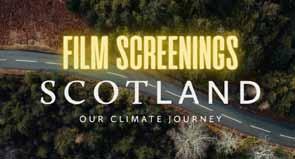

organise a screening
In March, a meeting was held in Geneva to discuss a global plan to tackle the world’s escalating nature crisis. Convened under the Convention on Biological Diversity, the meeting brought together government negotiators to debate the draft text of the post-2020 Global Biodiversity Framework, with the final plan set to be adopted at the COP15 biodiversity conference in Kunming later this year. Following limited progress and commitments made during the discussions in Geneva, it was announced that an additional set of talks would take place in Nairobi in June.
There has been plenty going on at RSGS during the early part of 2022, with a strong focus on nature and agriculture. We ran a conference with Perth City Leadership Forum, and another with the international geographical community (see pages 32-33), to see what greater role can be played to support the biodiversity crisis. We had a number of visitors, virtually and face-to-face, including Deputy First Minister John Swinney and Cabinet Secretary Marie Gougeon, with whom Mike Robinson is working closely through the Agriculture Reform Implementation Oversight Board which is considering a future farm payment system.
Mike Robinson spoke at a number of external events, including a Social Investment Scotland event, a YMCA Scotland conference, and a Perth Ambassadors breakfast meeting, and we ran a few film screenings of Scotland: Our Climate Journey. And we continue to develop our international connections, working with the Royal Canadian Geographical Society on their statement on Indigenous languages, with the International Geographical Union and the Royal Geographical Society (with IBG) on a biodiversity conference, and with the Explorers Club of New York.
In March, we were pleased to present RSGS Honorary Fellowship to Devi Sridhar, Professor and Chair of Global Public Health at the University of Edinburgh, in recognition of her invaluable research contributions during the Covid-19 pandemic, and for being a critical voice in communicating to the public and advising the UK and Scottish Governments. In addition to media appearances, much of Sridhar’s important impact on the UK’s pandemic response has been behind the scenes. As part of her DELVE membership, Sridhar advises the UK’s Scientific Advisory Group for Emergencies. She is also part of the Scottish Government’s expert group which develops and improves the pandemic response plan.

We are very grateful to Philanthropy & Fundraising International, a highly-regarded professional fundraising consultancy, for their recent generous provision of access to two places on their acclaimed Great Fundraising Masterclass. The inspirational training course is now helping to inform the development of RSGS’s new strategic fundraising plan, and we hope it will help us in achieving a significant step-change to the Society’s levels of regular income, enabling us to deliver more and better outcomes for Geography in Scotland over the next few years.
The East Grampian Coastal Partnership (EGCP) has launched a new project to create four unique maps covering the Aberdeen and Aberdeenshire coasts. The maps will feature a wealth of interesting information about the coastline, including the people, history, environment and activities that make the North East of Scotland special. EGCP is collecting memories, thoughts and short stories of residents and visitors who have spent time in the area, for possible inclusion in the maps. See www.egcp.scot/discover-maps for more information.

Digimap for Schools (digimapforschools.edina.ac.uk), created by Ordnance Survey (OS) and the University of Edinburgh’s data and digital expertise centre EDINA, gives teachers and pupils access to a wide range of OS’s authoritative data and tools. In recognition of the powerful effect mapping can have in bringing many academic subjects to life and supporting increased learning outcomes, OS will provide two years of free access to Digimap for Schools to any primary or secondary school in England with a low Ofsted rating.

David Henderson FRSGS, OS Chief Geospatial Officer, said, “Providing primary schools with an Ofsted rating of 3 or 4 free access to Digimap for Schools will help even more young people to experience the benefits of exploring their understanding of the world through maps. As well as being fun, the lifelong skills that stem from such enhanced geographical awareness are fundamental to solving some of today’s biggest challenges.”
During April, we were pleased to distribute copies of Horrible Geography of Stunning Scotland and James Croll and his Adventures in Climate and Time to all primary and secondary schools in Perth, as a free and fun learning resource! Horrible Geography teaches about the best (and most gruesome) of Scotland’s geography, from leaking lochs and roving rivers to groovy glaciers and vile volcanoes. James Croll tells the story of a brilliant-minded man from Perth who defied poverty and ill-health to become one of the world’s first climate scientists.

Both books can be purchased at our Fair Maid’s House Visitor Centre (open 1:00pm to 4:30pm, Thursday to Saturday), through our online shop at rsgs.org/shop, or by phone at 01738 455050.
We are sorry to report the death of one of our long-standing Vice-Presidents. Born and educated to Doctorate level in Belfast, Bruce Proudfoot was a Geography academic with a distinguished career that spanned universities in Belfast, Durham, Edmonton (Canada) and finally St Andrews. He served as RSGS Vice-President from 1993, and maintained a keen interest in the Society’s work, and in antiquities and archaeology.
Due to an unusual technical glitch, the title and byline of the article published on page 13 of the spring 2022 edition of The Geographer failed to appear. The article was entitled ‘Five million more
lost’ and it was written by Gordon Brown, former Prime Minister. We sincerely apologise for this error.
According to the United Nations, in late April at least 15.7 million people from Ukraine were in urgent need of humanitarian assistance and protection, and most of those had had to flee their homes. “Over five million people fled Ukraine to seek safety in other countries, and another 7.1 million have been internally displaced across the country,” said UN Assistant Secretary-General Amin Awad. “This represents more than 25% of the entire population of Ukraine.”
Since the Russian invasion on 24th February, civilian infrastructure has taken a huge hit, with more than 136 health facilities and an average of 22 schools a day coming under attack. Moreover, damaged water systems have left six million people without regular access. At the same time, humanitarians face tremendous challenges that often prevent them from delivering assistance to areas where people are in desperate need. And to add to the complexity, many people who have been displaced are now returning home.
The months of intense and escalating hostilities in Ukraine continue to have horrific repercussions for civilians, and continue to cause a grave humanitarian crisis. “It is remarkable how the humanitarian community here managed, in a few weeks, to expand from delivering assistance in two areas of eastern Ukraine to now operating across all 24 oblasts,” said Osnat Lubrani, UN Humanitarian Coordinator for Ukraine. “However, we are still not able or have been prevented from reaching areas where people are in dire need of assistance, including Mariupol and Kherson.”
Jane Digby el-Mezrab: From Ballroom Conquests to Bedouin Camps: RSGS Writer-in-Residence Jo Woolf explores the remarkable life of Jane Digby, who inspired a new character in the recent BBC adaptation of Around the World in 80 Days The Covid Pandemic, Two Years In: RSGS Chief Executive Mike Robinson reflects on the Covid-19 pandemic and considers what has changed since the beginning of the outbreak.
In March, Mike Robinson received the Cairncross Trophy, given in recognition of outstanding citizenship. The award was for his contribution as RSGS Chief Executive, for his promotion of community sport and wellbeing through his Chairmanship of Live Active Leisure, “and for the many other services he willingly and freely gives to the community of Perth.”

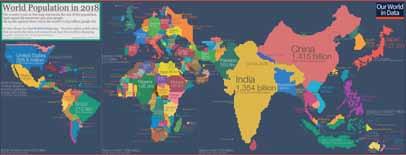

In 1950, five years after the founding of the United Nations, world population was estimated at around 2.6 billion people. It reached five billion in 1987 and six billion in 1999. In October 2011, the global population was estimated to be seven billion. In May 2022, it is estimated at over 7.9 billion. This dramatic growth has been driven largely by increasing numbers of people surviving to reproductive age, and has been accompanied by major changes in fertility rates, increasing urbanisation and accelerating migration. These trends will have far-reaching implications for generations to come.
See pages 8 9 for more information about world population growth.
Taking inspiration from the word-guessing game Wordle, there are now geographical versions. In Worldle (worldle.teuteuf.fr), you are asked to identify a country by its outline. You have six chances; if you guess incorrectly, you will be told in which direction the answer lies and how far away it is from the guessed country. In Globle (globle-game.com), you are asked to find the mystery country using the fewest number of guesses. Each incorrect guess will appear on the globe with a colour indicating how close it is to the mystery country; the hotter the colour, the closer you are to the answer.
We were delighted to appoint Alistair Cave and Matthew Edwards, from Mort&Pal Video Production & Editing Services, as the first RSGS Film Producers in Residence. We have already collaborated with Al and Matt on a number of exciting projects, including all of our online Inspiring People talks, our Chalk Talk online lessons, and interviews with John Blashford-Snell and Professor Iain Stewart. We look forward to continuing our work with Mort&Pal, and the film projects they will help us create in the future.
Many senior secondary school pupils will now be considering their options for university. Of course, the best subject for many will be Geography, as it offers such a wonderful breadth of subject matter, skills and experiences, leading to a wealth of career choices.
The University of Aberdeen, for example, offers both MA and BSc Geography subjects, with plenty of topics to offer in human and physical geography. The department specialises in subjects like sustainable development, rural and digital geography, paleoecology, water resource management, and glaciology. All teaching is research-led and investigates some of the most important problems facing the world today, ensuring that courses are current and exciting, and reflect the cutting edge of geographical research. For more information, visit www.abdn.ac.uk and search for ‘Geography’.
A flagship UN report on climate change which was published in April indicates that harmful carbon emissions from 2010 to 2019 were the highest in human history, and that as a consequence the world is on a ‘fast track’ to disaster. The Intergovernmental Panel on Climate Change (IPCC) report noted that greenhouse gas emissions generated by human activity had increased since 2010 across all major sectors globally, suggesting that we are on a pathway to global warming of more than double the 1.5°C limit that was agreed in Paris in 2015. Although there is encouraging work being done, the report calls for immediate reductions in emissions across all sectors to limit global warming.
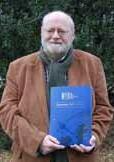
In April, we were pleased to present RSGS Honorary Fellowship to Dr Richard Dixon, former Director of Friends of the Earth Scotland and WWF Scotland, in recognition of the huge role that he has played in developing Scotland’s environmental ambition over the last three decades, in injecting science into a wide range of policies in Scotland, and in sharing his deep knowledge and wisdom throughout the NGO community.
Martin Hurst, Emma Laurie, Chris Philo, Rhian Thomas, University of Glasgow


Following the sterling efforts by Dan Clayton and Charles Warren (University of St Andrews), the Scottish Geographical Journal has moved into the custodianship of a new editorial team based at the University of Glasgow. This new team combines expertise across human geography (Emma Laurie, Chris Philo) and physical geography (Martin Hurst, Rhian Thomas), and together we possess diverse cross-disciplinary linkages across to the Earth sciences, geospatial and mapping sciences, social sciences and humanities.
In line with the scholarly traditions of the journal, dating back to 1885, we will seek to ‘refresh’ the journal’s offering in various ways: chiefly by encouraging greater flexibility in the types and forms of contributions that we will publish, but also by seeking a greater range of ‘voices’ from both inside and beyond academia. The Scottish roots of the journal are crucial, and our ambition is to be publishing high-quality, topical and challenging pieces about and from Scotland, always seeing Scotland within a global panorama of changing environments and landscapes (natural, manufactured, political-economic and sociocultural). We encourage people to read our inaugural editorial, which will appear shortly, and to check out the journal website (www.tandfonline.com/journals/rsgj20). Fortuitously, the first hard copy issue to appear under the new editorship will carry a brand-new cover, graced by a lino-cut from the esteemed artist Nick Hayes.
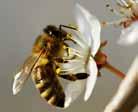
Neonicotinoids were back in the news recently, so it was interesting to see a survey carried out by the Scottish Government’s Bee Health Team, with consultation and comments by members of the Bee Health Improvement Partnership. Participants provided information on measures they would like to see included in a new strategy to help improve the health of Scotland’s honey bees. Comments show education remains at the forefront of future work. Other suggestions included bans or restrictions placed on imports and pesticides, government funding for new beekeepers and local associations, more communication, introduction of compulsory registration, more research, more bee inspections, and protection for Varroa-free areas. The results of the survey, along with lessons learned from a review of the previous strategy, will be key in informing the new ten-year Scottish Honey Bee Health Strategy.

In late February, under the auspices of His Highness Sayyid Bilarab bin Haitham Al Said, the British Embassy and Outward Bound Oman celebrated a new partnership to equip 500 young Omanis with a broad understanding of the importance of sustainability, and the causes and impact of climate change, with a focus on solutions, mitigation and opportunity. Using Outward Bound Oman’s equipped training centres in the Sharqiyah Desert and Jabal Akhdar, the Climate Shapers programme builds upon COP26 outcomes and aims to equip young Omanis with the knowledge to positively impact, influence and inspire the communities around them. The celebratory event took place in Outward Bound Oman’s training centre in Muscat, attended by His Excellency Bill Murray, the British Ambassador in Oman, and other VIP guests. RSGS featured prominently, with a three-minute video clip featuring our Chief Executive, Mike Robinson.

A new Scottish Government report (www.gov.scot/publications/ blue-economy-vision-scotland) focuses on the sustainable use of ocean resources while preserving the health of marine and coastal ecosystems. It recognises that Scotland’s seas and waters have a key role to play in contributing to the nation’s future economic prosperity, especially in remote, rural and island communities, and that a healthy marine environment is essential to supporting this ambition.
Scotland has 617,000km2 of marine area, seven times greater than the size of the land, and 18,743km of coastline. The marine economy supports nearly 75,000 jobs, a sector that generated £5 billion in GVA in 2019. The blue economy approach requires a transition from ‘environment versus economic growth’ (the prevailing status quo in Scotland and globally) to ‘shared stewardship’ of natural capital that is facing common pressures.
The six outcomes are:

1 marine ecosystems are healthy and functioning;
2 Scotland’s blue economy is resilient to climate change and contributes positively;
3 established and emerging sectors are entrepreneurial and competitive;
4 to be a leader in healthy, quality, sustainably harvested and farmed Blue Foods;
5 thriving, resilient communities have more equal access to the benefits that ocean resources provide;
6 Scotland is an ocean literate and aware nation.

In 2020, writer Val McDermid and geographer Jo Sharp edited a book called Imagine a Country, which contained nearly 100 ideas for Scotland’s future from people across the country, and challenged readers to start imagining their future. RSGS is taking up this challenge with a writing competition for secondary school pupils in Scotland. The deadline for entries is 24th June 2022, and we hope to feature the winning essays or stories in the next edition of The Geographer. See rsgs.org/imagine-acountry for more information.
We have now held ten Meet the Expert events, short online sessions in which individuals and organisations can hear from leading experts in the fields of climate change and sustainability. At an event in late April, we were joined by Professor Des Thompson, Principal Adviser on biodiversity and science at NatureScot, and Dr Deborah Long FRSGS, Chief Officer at Scottish Environment Link, to explore what the biodiversity challenge means for organisations, and what solutions exist.

Long-standing RSGS member and supporter Iain Rankin will have been known to many of you, most likely as the cheerful and dynamic Chair of the RSGS Aberdeen Group, a position he held for many years. Iain was a huge supporter of RSGS, alongside his many other charitable interests, and we miss him greatly. He volunteered in the Fair Maid’s House, promoted our work wherever he could, and even attended events on our behalf. One such was the Patron’s Lunch, a street party to celebrate the 90th birthday of our Patron, Her Majesty The Queen, held in The Mall in London in 2016, which Iain enjoyed with other long-standing members including Board member Lorna Ogilvie.
Iain was always incredibly enthusiastic about our activities, especially those which benefitted young people. Perhaps it isn’t surprising then that Iain’s generous spirit also extended to his legacy. When he died in 2018, he not only made sure that we received his map collection, but he also mentioned RSGS in his Will. And in late April we received a final notification that RSGS will receive c£15,000, for which we are extremely grateful. Gifts like these are really vital to our small charity, and we are indebted to Iain’s foresight and kindness.
If you would like to consider donating to RSGS in your Will, please do get in touch with Mike Robinson at the office in Perth.
For many of us, the population bomb is the ultimate ecological doomsday machine. All efforts to halt climate change, end extinctions and the rest are bound to fail, it seems, unless we can end the apparently unstoppable rise in human numbers in Africa, India and elsewhere.
Well, we should think again. For in the half century since the phrase was popularised by American ecologist Paul Ehrlich, in a best-selling book of the same name, the population bomb has gone a long way to being defused. What is replacing it is a consumption bomb.
Take India. It is about to overtake China as the world’s most populous country. But in November 2021, the government there announced that the number of children born to an average Indian woman had fallen from 5.9 back in the 1960s to just 2.0, slightly below the long-term ‘replacement level’ of 2.1 children per woman.
With two-thirds of India’s population under 35 years old, it will be a while before their numbers stop rising. But the country is primed for population decline from mid-century. It is far from alone. Only two of the world’s ten most populous nations still have fertility above 2.1: Pakistan and Nigeria. The rest – China, India, the USA, Russia, Brazil, Mexico, and most recently Bangladesh and Indonesia – are at or below replacement levels. Global average fertility is below 2.4 and falling fast. The trend to radically smaller families is near-universal now. In much of East Asia, as well as southern and eastern Europe, fertility has for years been closer to one than two. When in 2015 China abandoned its 35-year-old coercive one-child policy, there was no fertility uptick. Chinese women mostly only want one child now. Declining fertility typically goes fastest among the better educated and better off, and those living in cities. But “there is plenty of evidence that once fertility starts declining, less educated/poorer/rural people follow suit,” says Monica Das Gupta, a sociologist at the Maryland Population Research Center. The underlying reason is that, thanks to massively improved health among children, couples can decide their family size on the assumption that their babies will grow to adulthood.
So, while the world’s population has more than doubled in the past half century, to around 7.9 billion today, it seems most unlikely to double again. UN demographers predict a peak of around 11 billion at the end of the century. Many demographers believe it will happen much sooner. Stein Emil Vollset at the University of Washington says numbers may peak in the 2060s, and slump to as low as 6.3 billion by the century’s end.

That may be over-optimistic. Women in sub-Saharan Africa still average 4.7 children, but even there the trajectory is downwards. In the 1970s, Kenya had the world’s highest fertility rate, at 8.1. Today, it is today down to 3.4. Vollset and others expect accelerated fertility declines, as the continent urbanises, education improves, and family planning becomes more available. But no coercion required. If Ehrlich’s demographic doomsday scenario is not playing out, his framing of the planetary crisis remains otherwise correct. He saw humanity’s impact governed by three factors: human numbers, rising per capita consumption, and the technology we use to produce what we consume.
It is increasingly our consumption patterns that are driving climate change, our rising use of resources, and the destruction of nature. And that is with as many as a billion people going to bed hungry at night, and many more with degrading living standards.
To defuse the consumption bomb, we need of course to address the consumption patterns of the rich – and yes, that does include us – but also to embrace the third factor in Ehrlich’s doomsday equation. Here too there is at least a glimmer of hope.
To take three examples. We know the energy-generating technologies that can cut our carbon emissions by more than 90%. We know how to recycle most materials to reduce mining and simplify manufacture. And we know how to produce our food on a fraction of the land currently tilled, so giving land back to nature.
So here is an optimistic narrative. The doomsters are wrong. Demography is not destiny. But our ingenuity assuredly is.
“While the world’s population has more than doubled in the past half century, it seems most unlikely to double again.”
The profound impact of people on the planet is undeniable: 95% of the Earth’s surface and 87% of the ocean are affected by human activity. We’ve disrupted the climate to a degree that threatens all life on Earth. Our geological age was recently named the Anthropocene to reflect the devastating transformation being caused by a single species: our own.
Yet when it comes to the root of this ecological harm, people often choose sides with the fervour of football fans, blaming either population or consumption. But this is a match no one wins unless we recognise that population and consumption are two sides of the same coin.
We can’t meet climate targets or protect wildlife simply by slowing population growth while greenhouse gas emissions, animal agriculture, plastics production, waste, and pollution continue to rise on a steep curve.
And we can’t effectively mitigate climate change over the long term, stop deforestation, or end the extinction crisis as long as we continue adding 220,000 people to the planet every day. That’s nearly doubling the population of Glasgow each week – and every new person needs food, water, energy, and a place to call home.
Consumption and population combined create the pressure we put on the world around us.
By the end of 2022 or early 2023, there will be eight billion people in the world; more than twice as many as there were 50 years ago. In that same time span, wildlife populations have plummeted by more than two-thirds and wild spaces have been lost at an alarming rate. According to the Global Footprint Network, in 2021, humanity used up the resources the planet can replenish in a year by the end of July; five months too soon. We’re amassing ecological debt we won’t be able to repay.
Although the public discourse about environmental crises continues to be dominated by debates over rapid population growth versus unsustainable consumption, many people are beginning to understand this is a false dichotomy.

A recent survey by a US-based reproductive health company found that 58% of people were reconsidering having children because of the climate crisis. Another survey found that more than 96% of respondents were “very” or “extremely concerned” about their children growing up in the age of climate crisis, while nearly 60% were just as concerned
about the carbon footprint of their reproductive choices. As a result, people are deciding not to have children, to have fewer children, or to move to a city with fewer climate-related risks before getting pregnant.
We inherently understand that our family planning choices and the future of our children can’t be separated from how we use and exploit the environment.
The clock is ticking before the changes wrought by humanity are irreversible – not just climate catastrophe but the loss of irreplaceable biodiversity and healthy ecosystems. We don’t have time to argue about whether population growth or consumption is to blame, especially when the solutions are the same.
There are good reasons why people react to these issues with the passion of rivals, especially when it comes to the stigma around population growth. Historically, and even now, atrocities like forced sterilisation have been committed in the name of population control. One thing we can all agree on is that human-rights violations have no place in the fight for our future. Solutions must be based in justice, dignity, and empowerment. And those aren’t just the only acceptable solutions; they’re also the most effective.
Increasing access to reproductive healthcare and education for women and girls improves equity and wellbeing, which make it easier to cope with environmental disasters. Women who are educated and empowered to make their own family planning decisions are also better able to participate in muchneeded solutions to climate change, pollution, habitat loss, and other ecological problems. Healthcare and education also happen to be the key to slowing population growth.
Transitioning to renewable energy reduces pollution and climate risks that harm reproductive health and justice, making it easier for people to choose if and when they want children and to raise their families in a healthy environment. Transforming food and agriculture to increase access to sustainable diets and farming practices improves human health outcomes, particularly for pregnant people and children, and reduces pressure on wildlife and habitat.
To address the environmental crises that define our lifetime, we need to find solutions to both population growth and overconsumption by expanding human rights and creating a fairer, healthier future for everyone.
“We’re amassing ecological debt we won’t be able to repay.”
The world’s population is expected to increase by nearly two billion persons over the next three decades, from 7.9 billion currently to 9.7 billion in 2050. A report published by the Population Division of the UN Department of Economic and Social Affairs (World Population Prospects 2019, population. un.org/wpp) concluded that the world’s population could reach its peak around the end of the current century, at a level of nearly 11 billion. The report also confirmed that the world’s population is growing older due to increasing life expectancy and falling fertility levels.
Growth rates vary greatly across regions. The number of countries experiencing a reduction in population size is growing, while the population projections indicate that nine countries will make up more than half the projected growth of the global population between 2019 and 2050: India, Nigeria, Pakistan, the Democratic Republic of the Congo, Ethiopia, the United Republic of Tanzania, Indonesia, Egypt, and the United States of America (in descending order of the expected increase). China (1.44 billion) and India (1.39 billion) remain the two most populous countries of the world, representing 19% and 18% of the world’s population,
respectively. Around 2027, India is projected to overtake China as the world’s most populous country.

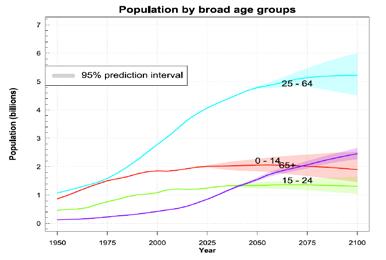
The population of sub-Saharan Africa is projected to double by 2050 (99% increase). Growth rates for other regions include Oceania excluding Australia/New Zealand (56%), Northern Africa and Western Asia (46%), Australia/New Zealand (28%), Central and Southern Asia (25%), Latin America and the Caribbean (18%), Eastern and SouthEastern Asia (3%), and Europe and Northern America (2%).
The global fertility rate, which fell from 3.2 births per woman in 1990 to 2.5 in 2019, is projected to decline further to 2.2 in 2050. A fertility level of 2.1 births per woman is needed to ensure replacement of generations and avoid population decline over the long run in the absence of immigration. In 2019, fertility remained above 2.1 births per woman, on average over a lifetime, in subSaharan Africa (4.6), Oceania excluding Australia/New Zealand (3.4), Northern Africa and Western Asia (2.9), and Central and Southern Asia (2.4).
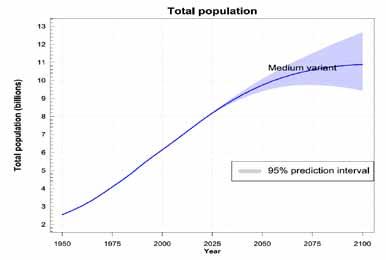
“The world’s population is growing older.”
The world’s population is growing older, with the age group of 65 and over growing the fastest. By 2050, one in six people in the world (16%) will be over age 65, up from one in 11 (9%) in 2019. Regions where the share of the population aged 65 years or over is projected to double between 2019 and 2050 include Northern Africa and Western Asia, Central and Southern Asia, Eastern and South-Eastern Asia, and Latin America and the Caribbean. By 2050, one in four persons living in Europe and Northern America could be aged 65 or over. In 2018, for the first time in history, persons aged 65 or above outnumbered children under five years of age globally. The number of persons aged 80 years or over is projected to triple, from 143 million in 2019 to 426 million in 2050. The falling proportion of the working-age population is putting pressure on social protection systems. The potential support ratio, which compares numbers of persons at working ages to those over age 65, is falling around the world. In Japan this ratio is 1.8, the lowest in the world. An additional 29 countries, mostly in Europe and the Caribbean, already have potential support ratios below three.

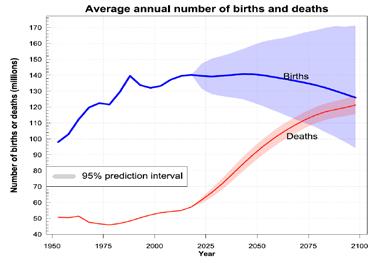
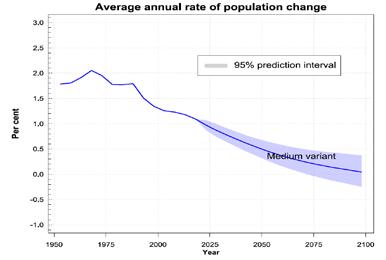
A growing number of countries are experiencing a reduction in population size. Since 2010, 27 countries or areas have experienced a reduction of 1% or more in the size of their populations. This drop is caused by sustained low levels of fertility. The impact of low fertility on population size is reinforced in some locations by high rates of emigration. Between 2019 and 2050, populations are projected to decrease by 1% or more in 55 countries or areas, of which 26 may see a reduction of at least 10%. In China, for example, the population is projected to decrease by 31.4 million (c2.2%) between 2019 and 2050.
Migration has become a major component of population change in some countries. Between 2010 and 2020, 14 countries or areas will have seen a net inflow of more than one million migrants, while ten countries will have seen a net outflow of similar magnitude. Some of the largest migratory outflows are driven by the demand for migrant workers (Bangladesh, Nepal and the Philippines) or by violence, insecurity and armed conflict (Myanmar, Syria and Venezuela).
 Dr Phoebe Barnard, Chief Executive, Stable Planet Alliance, USA
Dr Phoebe Barnard, Chief Executive, Stable Planet Alliance, USA
We can no longer avoid it: humanity is in advanced ecological overshoot. Our overexploitation of resources exceeds ecosystems’ capacity to provide them or to absorb waste. Global society has failed to meet the goals of the UN Framework Convention on Climate Change (UNFCCC). We face an epochal crossroads.
Solutions are rooted in the two fundamental drivers of ecological overshoot: population growth and consumption growth. Consumption is, of course, non-linearly but inextricably linked to population. Global population is now roughly ten times the relatively stable levels prior to 1750. And global consumption is massively greater than this; disproportionately so. The 80+ million net new people added to the planet each year (which is ten million more people than in the entire United Kingdom in 2021) and their associated consumption undermine solutions to our environmental and societal crises.
Climate instability, extinction, famine, social and political instability, unprecedented suffering – all our good works to forestall these are made almost impossible simply by needing to cut the ‘pie’ into an additional 80 million pieces each year.
Population and consumption are the two fundamental ‘threat multipliers’. And managing these threat multipliers, not to mention the threats that are multiplying, requires changing both public perception and public policy. This is the first step. The next step is significantly increasing investments in ethical and empowering health, education and economic programmes supporting women and girls, men and boys. These can already start to bend the global population curve by the middle of the century, or even sooner. Bold actions are required in the next five to eight years, at all scales. Yet the ‘demographic transition’ that made such progress in the 1960s and 1970s slowed in the past 20 years. Investment in family planning programmes faltered over the past 25 years, despite continued population growth. Globally, births per woman fell by more than one in the 1970s, but by only 0.1 in the 2010s. There are twice as many women of childbearing age as 50 years ago. Much more deliberate action is needed.
Society is changing fast anyway, everywhere. Women are increasingly choosing smaller families, to better provide for their children and balance family life with economic opportunities. Small families are one of the best ways to reduce human impacts. Many young people also question the ethics of bringing children into a world so fraught with crises. For citizens of rich countries, having fewer children is the single most effective way to individually reduce future greenhouse gas emissions. For those of poor countries, increasing economic and educational advancement and urbanisation are rapidly changing birth rates, although they sometimes increase consumption. Many countries are currently perversely trying to increase birth rates, through ill-founded fears of the economic impacts of an ageing population. Such misconceptions contribute to chronic underfunding of reproductive health and family planning services, and growing numbers of women with
unmet needs. Fulfilling these needs could avoid 21 million unintended births globally per year, while saving $3 on maternal and newborn health care for each dollar spent on contraception. The economic stimulus from slowing population growth repays the investment more than one hundredfold within a few years.
Despite 25-year shortfalls in intergovernmental support for family planning programmes, some non-profit- initiatives are effective in reaching under-serviced communities and transcending cultural barriers. For example, Population Media Center’s serialised TV/radio dramas in local languages in 50+ countries change attitudes toward women’s roles, family violence and contraception. Adequate funding for these normshifting programmes is an essential investment in planetary and social wellbeing.
Other good news is the proliferation of Population-HealthEnvironment (PHE) projects. Few environmental or livelihood programmes in the past linked population growth and environmental stress, but this is changing. PHE projects integrate community health and family planning alongside resource management and livelihoods, often with greater community engagement and enthusiasm than single-sector projects. Linking environmental health with population pressure improves men’s support for family planning. Scaling up and funding such projects would steadily reduce pressure on our planet and climate.
While climate change may not motivate everyone to have smaller families, the improvement of family and community wellbeing may. Smaller families improve women’s health, infant nutrition, and access to schooling and employment prospects, while easing pressure on the environment. After a few decades, the lower population trajectory becomes a dominant determinant of sustainable wellbeing.
Like planting a forest, our slow start only increases the urgency of our predicament. How we normalise lower birth rates in this decade will make the difference between having 12 billion or seven billion people to sustain in 2100. While accelerating the decline in fertility won’t contribute much to phasing out fossil fuels by 2050, it will affect our trajectory for ending and reversing deforestation. This is vital for achieving net-zero emissions. Earth in overshoot cannot sustain even the current 7.9 billion without unacceptable trade-offs. It’s time we acknowledge this.
“Managing these threat multipliers requires changing both public perception and public policy.”
Approximately 80 million people are added to the global population annually. That is the equivalent of ten New York Cities, or a single Germany, added to our planet – each year. Our planet’s finite geography has been transmogrified by humanity’s constant march to delete or further burden our planet’s unique ecoregions that support basic human life. This has finally led to a global discussion on how we, as a global community, might set aside 30% of our planet for nature by 2030, on our quest to set aside at least half of the planet for wilderness over the long term, as the famous ecologist E O Wilson called for in his final book Nature Needs Half in 2016. Population is not the only issue at play here, but the days of ignoring population dynamics as the inconvenient truth that we prefer not to discuss are now over.

Humanity long ago exceeded our planet’s longterm ecological carrying capacity, and has been accumulating ecological debt at an alarming and unsustainable rate – a debt that will come due in a horrific manner if not paid down aggressively in the near term. Human population and consumption dynamics have been driving us closer and closer to climate catastrophe, ecological destruction and untold human suffering each year. Yet we should not necessarily be discouraged. Our ability to bend these curves, lighten the human footprint choking our planet, and avert such catastrophes is nigh.
The energy transition is already afoot, and could easily be accelerated. Ideally we would achieve not only net-zero emissions but zero emissions, and far less profligate use of energy. Transitions in our consumption patterns, particularly those of the wealthiest nations, are also finally being discussed in earnest. Done properly, this transition could help many of us lighten our individual human footprints, while also allowing billions from the developed world to transition into the global middle class without emulating the kind of ecological footprint we in the developed world have historically foisted on our planet. We should not kid ourselves; much is left to be done on both these counts. But, it is the demographic transition that must be accelerated, receiving particular attention, if we are to live within the limits of our finite planet. We cannot continue adding 80 million people each year and think our progress on
energy and consumption transitions will have a meaningful effect, particularly since we are buried so deep in the ecological debt that generations of humans have already accumulated. Many forget that a demographic transition has been afoot for decades, as women and girls have been educated, empowered, integrated into the workforce, and given access to family planning technologies. The overall fertility rate of the world has dropped from five children per woman in 1950, to below 2.5 in 2020, which means that women today are having half the number of children that women did 70 years ago. The Population Research Bureau reported a global fertility rate of 2.3 in 2021. We are so close to achieving the replacement fertility rate of 2.1. Many countries have demonstrated that this demographic transition leads to prosperity, not the other way around, with some of the most prosperous countries (and certainly many of their urban centres) demonstrating fertility rates of 1.5 or below. South Korea reported a fertility rate of 0.8 in 2021. Scotland is now below 1.29 total fertility rate. How much would we need to invest in women and girls over the next decade to accelerate this demographic transition so that globally we achieved a fertility rate of 1.5 by 2030 –using empowering strategies and shunning coercive means? That is the question we should be asking ourselves and our leaders. If we achieved that goal, and if we accounted for the natural demographic momentum built into the system, by 2050 we could have fewer people on the planet each year instead of more. We could safely avoid a peak of nine billion humans, and glide to three billion humans soon after 2100, all the while paying down centuries of ecological debt. Some (economists in particular) will invoke baby bust alarmism, questioning how the economy could work in such a scenario. I suspect if the great Scottish economist Adam Smith were alive, he would explain the mechanisms by which our economy could be resilient in the face of this challenge; certainly more resilient that it will be in the face of climate catastrophe, ecological annihilation, and the resulting human displacement, conflict and suffering.
In A Planet of 3 Billion, Dr Tucker decrypts the complex story of how we have come to burden the finite geography of our planet in unsustainable ways.

“Many countries have demonstrated that this demographic transition leads to prosperity.”
Half a century ago, in the summer of 1972, the United Nations Conference on the Human Environment opened in Stockholm. It was a historic meeting. It led directly to the establishment of the Brundtland Commission, whose report triggered a succession of international meetings, beginning with the UN Conference on Environment and Development in Rio de Janeiro in 1992, and its successors, in Johannesburg in 2002 (Rio+10) and Rio again in 2012 (Rio+20), and finally the United Nations Sustainable Development Summit in New York in 2015, which adopted the Sustainable Development Goals.
In June 2022, the fiftieth anniversary of Stockholm is being marked by another UN meeting, ‘Stockholm+50’, again in Stockholm. This is pitched as a commemoration of the 1972 meeting, a celebration of “50 years of global environmental action,” and an opportunity to address the “triple planetary crisis” of climate, nature, and pollution. The United Nations Environment Programme (UNEP) hopes it will “act as a springboard to accelerate the implementation of the UN Decade of Action to deliver the Sustainable Development Goals.” That is a lot to hang on a two-day meeting.
The 1972 Stockholm Conference had predecessors, including the UN Scientific Conference on the Conservation and Utilization of Resources in 1949, and the Man’s Role in Changing the Face of the Earth symposium in 1955. That included contributions from geographers (Darby, Gourou, Glacken, Mumford, Sauer, the list is long) and helped give human-environment relations a central position in the growing discipline of Geography.
More immediately, Stockholm drew inspiration from the Biosphere Conference in Paris in 1968, and discussion of the environment by the UN’s Economic and Social Council. The Swedish ambassador to the UN proposed a conference on the human environment in July 1968.
The worries that brought Stockholm into being were primarily those of western environmentalism, about issues such as nuclear and chemical waste, acid rain and industrial

pollution. Silent Spring, Rachel Carson’s ground-breaking critique of the pesticides industry, had been published ten years earlier, and Paul Ehrlich’s neo-Malthusian The Population Bomb in 1968. Environmental movements were growing fast, particularly in Europe and North America. The governments of many developing countries (many recently independent), mistrusted this environmentalism. Faced with deep poverty, environmental problems caused by industrialisation seemed remote. They feared that environmental protection would hinder economic development.
A meeting of the Stockholm Conference ‘Preparatory Committee’ in 1971 adopted the idea of sustainable development to circumvent these fears, suggesting that development and environmental protection could go together, that industrialisation without environmental harm was possible. This kept the conference on track. The scope of the conference was also expanded to include issues of particular concern to developing countries such as soil erosion, desertification, water supply and human settlement.
The Stockholm Conference itself was attended by the governments of 113 countries, although (unlike the Rio Conference 20 years later) by only two Heads of State (Indira Gandhi for India and Olaf Palme from the host country).
Issues debated included not only environmental problems, but nuclear weapons testing and the Vietnam war. Delegates from developing countries argued that environmental issues must not restrict opportunities for economic growth. Mrs Gandhi made a famous speech framing the fundamental challenge facing the world as one of inequality, arguing that the environment could not be improved while some countries and people remained poor.
The Stockholm Conference agreed 26 Principles, which ranged from the safeguarding of renewable and nonrenewable resources and ecosystems and the prevention of pollution to nuclear weapons and human rights. The conference’s greatest achievement was to place the idea of sustainable development onto the international agenda,
“Stockholm+50 is an exercise in peaceful multilateralism to tackle environmental crisis.”Stockholm. Image by Tommy Takacs from Pixabay
although only eight of 109 Recommendations for Action referred to development and environment specifically. This was more a statement of faith than a plan.
Fifty years later, UNEP (which itself arose from Stockholm 1972) is asking us to look back to 1972, and draw inspiration for tackling the profound challenges of the 21st century. How has the world changed over five decades of debate about sustainable development? What remains the same?
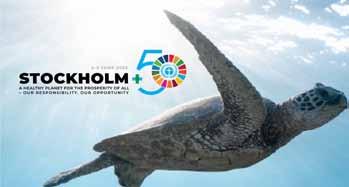
One big thing that has changed is the recognition of the importance of anthropogenic climate change. Climate barely got a mention in 1972. It began to climb up the agenda only with the World Climate Conference in 1978, the work of the International Panel on Climate Change (IPCC) from 1988, and the UN Framework Convention signed at Rio in 1992. Now, climate change dominates every list of environmental threats. A second thing that is different in 2022 is the size and complexity of the international machine created to bring about a transition to sustainability. In 1972, many governments did not want the environment on intergovernmental or UN agendas. The so-called ‘Brussels group’ (including the UK and the USA) opposed the whole idea of the conference. That has changed utterly. Despite wobbles (President Trump’s withdrawal of the USA from the Paris Agreement comes immediately to mind), the web of international agreements, commitments and targets has got ever stronger and denser. Descriptions of Stockholm+50 link it to the Food Systems Summit, climate COP26, the High Level Dialogue on Energy, UNEA5.2, UNEP@50, climate COP27, and biodiversity COP15. Stockholm+50 is one tiny element in a huge diplomatic sustainability machine, a bureaucratic monster whose gaze will only momentarily linger on Stockholm this June.
On the other hand, much remains the same fifty years after the first Stockholm Conference. Most obviously, perhaps, 2022 brings a sense of déjà vu about the way politics frames international discussion of the environment. In 1972, the USSR and Warsaw Pact countries refused to attend the conference in protest that East Germany could not participate (neither East nor West Germany were members of the UN at the time), and China condemned US policy in Indochina (the Vietnam war was at its height). In 2022, Stockholm+50 takes place in the shadow of the savage Russian invasion of Ukraine, and superpower rivalries and domestic populist politics shape possibilities for progress. Stockholm+50 is an exercise in peaceful multilateralism to tackle environmental crisis, but in 2022 we have arguably moved away from international détente of the 1990s towards a world of new cold and hot wars.
It is also an unfortunate fact that many of 1972’s threats to the environment are still with us. Nuclear power is undergoing a renaissance as part of a decarbonised future (especially, for Europe, one not reliant on Russian gas). Yet there is still no credible plan for dealing with nuclear waste, and decades of efforts to separate weapons from civil power generation once again look problematic. Pesticides are also controversial again, with the impacts of neonicotinoids on honeybees and wild pollinators looking like an uncanny (and unhappy) sequel
to Silent Spring. Concern at the impacts of technological advance on the environment is again widespread. To take one example, novel genetic technologies and synthetic biology offer a step into the unknown, with attendant opportunities, risks and controversy.
Poverty and inequality also still characterise the world, despite progress in reducing numbers in absolute poverty. As Covid revealed, the world is profoundly unequal, and highly dysfunctional. The book written for the first Stockholm Conference by Barbara Ward and René Dubos, Only One Earth (1972), recognised the hard inheritances of colonialism and exploitative trade, and this critique is still valid. To it we can add the power of for-profit non-state actors to maximise profit and minimise costs, outsourcing environmental and social impacts down labyrinthine supply chains and avoiding taxation.
Perhaps most worryingly, the world economy is still utterly unsustainable. In a world in which sustainability targets and roadmaps abound, the direction of travel is still wrong. The Global Footprint Network calculates that ‘Overshoot Day’ for the Netherlands fell on 12 April this year. Most industrialised countries followed soon after. By any measure, our economies (global, national, and often local) demand more of the Earth’s natural systems than they can sustain. The classic critique of conventional growth strategies, Limits to Growth, was published in 1972. Neither the Stockholm Conference in that same year, nor its many successors, addressed the fundamental challenges of resource consumption, and the changes required to live sustainably on Earth. Our international meetings rearrange deckchairs on the Titanic, hoping we do not have to change course.
The 1972 Stockholm Conference began a debate on the human environment that is still raging, and is as urgent as ever, fifty years later. The challenges of sustainability transitions remain scarily difficult. The alternative is unthinkable.
Bill Adams’s book with Kent Redford, Strange Natures: conservation in the era of synthetic biology, was published by Yale University Press in 2021.
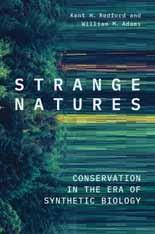
“The world economy is still utterly unsustainable.”
One of the challenges of every Geography teacher in Scotland is to try to ensure that all young people are secure in the Curriculum for Excellence (CfE) outcomes associated with this subject by the time they are 14, as well as interested in continuing their geographic studies into S3. We have only two years as subject specialists to develop pupils’ passion for all things that are Geography, and have to do so within the current CfE constraints as well as having only a couple of contacts a week in which to teach our courses.
With such limited time and so much to cover, inevitably each of us has to prioritise certain curricular themes over others, and design courses that will attract young learners to continue their geographic journey for a few more years. With this in mind, Population Geography can be easily overlooked, not because it lacks importance as an area of geographic knowledge, but because it can easily be perceived as very dry, data driven, and less likely to attract students in what has increasingly become a very crowded landscape of subjects.

The Curriculum for Excellence programme dictates that all young people in Scotland be able to “compare the population structure of Scotland with a contrasting country and express informed views about the future implications for these societies,” (CfE, Level 4, Experiences and Outcomes). It is therefore incumbent on educators to shine a lens on this at some point, but this is, more often than not, done so rapidly. As a consequence, many of our young people do not really gain an appreciation of the changing demographics at play both in Scotland and internationally, as well as the impacts of population change across the globe. Nor do they get the time to develop some of the analytical
skills that the study of demographics could help develop. So why is demography so important and how can we engage 12- and 13-year olds in its study? The first area that needs to be addressed is to get young people engaged with the key language of demography, fertility rates, life expectancies and other key population indicators. This is more than just teaching a vocabulary; this is about enabling young people to compare and contrast data for countries at different stages of development. For example, is a life expectancy of 70 good or bad? If a country has a fertility rate of five, is this high or low? To do this, I have adapted the popular Top Trumps game from my youth and created my own deck of population Top Trumps cards where students need to select a population characteristic on their card to try to beat the value on their opponents’ card. It does not take long for students both to understand what each indicator means and to compare countries according to their data, whilst having fun!
Now that I have my students primed and excited by data, we move onto another key skill in this area of Geography: the ability to describe patterns. Population Geography lends itself perfectly to this skill; however, it can also be very dry. To get around this, I get students to extract life expectancies of each African country, input the data into a Google spreadsheet, and then we use the thematic mapping function in this spreadsheet to map the data. This can be done for any population data, but what is key is that the students engage with the data. The process of extracting data and inputting it into a table allows them to see the variations between countries and when they map it they very quickly pick up the geographic patterns at play and the language that comes with describing patterns.
“We use the thematic mapping function in this spreadsheet to map the data.”
Next up is developing an understanding of how development over time impacts on changing demographics. This is introduced to my students through the Jelly Baby game, where each student starts the game with their own population of jelly babies where each colour represents a segment of their society, for example the pink jelly babies represent the babies. Through selecting cards during the game, their population changes according to the instructions on the card. For example, their country may experience mechanisation in agriculture, and as a consequence they lose one of their pink jelly babies to represent a reduced dependency on children in agriculture. It takes very little time during the plenary to this game to get pupils to understand what factors caused their population to change during the game and, when they are asked to explain in detail the factors that can cause populations to change, they are able to give thoughtful insights into what happened to their country as if it were a real country (and do so whilst consuming their population).
Once students have grasped why populations change, they are ready to investigate population pyramids. These graphs are bread and butter to any Geographer, but to a 12-year old they have a certain smell of Maths about them. It is here that I make use of the digital resources available, especially www.populationpyramid.net which takes one-dimensional static graphs and brings them to life. The students get to explore the population of any country using this tool and investigate how they change over time. They are set certain challenges to investigate selected countries and try to determine what has happened to them in relation
to recent and historical population changes. For example, why in 1990 did China have a very small proportion of 4549-year olds, or why does the UAE have a huge proportion of 25-35-year-old males in 2020. These graphs allow the students to explore data in a way that was not available in the past, as well as connecting it to the personal stories of each country on Earth in relation to its own demographic changes. The end of the population journey for my 12- and 13-year olds is to consider the impacts of the population changes they have been studying. To do this they explore issues relating to Scotland’s ageing society and contrast those with Malawi and its youthful expanding society. This is the central theme that I have been building up to across the entire course, but by the time they arrive at it, they are fully invested in this subject matter and can converse using the language of demography when discussing the differing challenges of our two societies.
I began this article with the idea that Population Geography is often overlooked during the junior phase of Secondary education because of its perceived lack of interest to young people. With so many engaging geographic contexts available to us educators, who would take the risk of using up significant curriculum time when we are mindful that these students are soon going to be making their subject choices? What I have found is that by turning Population Geography into the central plank of my curriculum in first year and then building other curriculum themes like Climate Change, Environmental Issues, Development, Urbanisation and Global Tourism around key themes introduced during the Population topic, I have made the study of Population Geography one of the areas of the course that the students most enjoy.

“Each student starts the game with their own population of jelly babies.”Image by Eak K from Pixabay
What is it about Geography that you think is important? What can Geography offer to the world?
Geography is just such a vibrant subject. It is the opposite of narrow vision. A geographical education provides a wonderful range of skills to make sense of the world around us; asking us why the world looks the way it does, why there are differences between people and places, and what needs to change to make it better. It is pretty clear that the most difficult challenges we face just now – climate change, the emergence of new infectious diseases, growing poverty, and so on – can only be tackled from a perspective that recognises the interdependence of human and physical processes.
What are the challenges for geographers today? How do you think Geography is faring as a subject?
The subject does face challenges. There is a popular perception that Geography is all about memorising facts and figures about places, and this has meant that some have a lifelong aversion to the subject. Another perception is that it is all about exploration and travel, creating a perception that it’s for privileged students who can afford to explore the world in their gap year.
I don’t think that the Curriculum for Excellence has helped here, because it has eroded the visibility of Geography at school, and so there is less chance to challenge inherited views about the subject. I have recently been involved with redrafting the Quality Assurance Agency’s Benchmarks for Geography, and we were keen to highlight the diversity of ways that Geography can be studied, ensuring that the subject is welcoming to all.
Academically, I do think the subject is being taken seriously in a way I haven’t seen before in my career. I think it’s in part due to a growing realisation that many of the most challenging issues we face today are not things that can be fully understood from any single perspective. There is a vibrancy to Geography that comes from the diversity of approaches, methods and concepts that we draw on which is starting to be recognised.
What does RSGS do that you think more people need to know about?
RSGS has changed so much in the last 10 15 years. It has positioned itself as a leading voice in environmental issues, and seeks to help guide Scotland through the transition to becoming a more sustainable country. The Society does this through involvement with education, whether the Education Committee which connects school teachers across the country, or The Geographer which is a great source of information about all things geography for any interested reader. If you want ideas for what you can do to help make Scotland a greener country, or have ideas you would like to share about this, RSGS is your first stop!
How did you first get interested in the subject of Geography?
Like so many people, I first got interested in Geography because of the enthusiasm of a wonderful teacher, Kenny
Maclean at Perth Academy. His classes embodied a curiosity about the world that has stayed with me. I loved the way the subject brought together a variety of topics and approaches, theories and methods. I was interested in lots of subjects at school and struggled with the idea of narrowing my study, so the diversity of Geography always appealed. What have you done so far within the subject of Geography, and where has this taken you thematically and globally?
At Cambridge I was fortunate to take classes on political geography from Graham Smith. In my final year, his class started as The Geography of the Soviet Union and concluded as The Geography of Russia. It was a fascinating time to be studying this and I was determined to continue my study of political geography for my PhD. I had found John Agnew’s work on place and politics inspiring while writing my undergraduate dissertation (on the politics of the Shetland Movement), and so applied to study with him in Syracuse University in upstate New York. After my PhD, I started work as a lecturer in Geography at the University of Glasgow in 1995.
At Glasgow, I also had the opportunity to get involved in collaborative and interdisciplinary research projects. First, I was invited by John Briggs to join the Wadi Allaqi project, which was a collaboration with botanists and chemists at South Valley University in Aswan, to study a protected area in the south-eastern desert of Egypt. The building of the High Dam in Aswan in 1970 had created a large lake in this desert environment, and we were interested to understand the changes this had created. John had been leading work with Bedouins who lived in the area, to get at their understandings of the environment and the resources it offered to ensure that conservation efforts in the area took account of their voices. I led a team to work with Bedouin women to understand the particular challenges that they faced in living in such an extreme environment. While we wrote up much of this work for academic publication, I am most proud of the other outputs of the project, including the development of farms led by Bedouin women, and the introduction of literacy programmes.
In the last 15 years, I have been involved with another interdisciplinary project, this time focused on zoonotic diseases in norther Tanzania. The project started because a medical researcher, John Crump, who was based at the referral hospital in Kilimanjaro Region, noticed that a lot of people were arriving at the hospital with a fever and were being treated for malaria, but weren’t getting better. Using gold standard tests, he and his team discovered that less than 2% of people did have malaria. Around a third of them had bacterial zoonoses, like leptospirosis or brucellosis. These are generally not life-threatening conditions, but they can produce quite debilitating chronic conditions in humans and can reduce productivity and fertility in livestock, so it is a challenge for societal development. We put together an interdisciplinary team to look at the different sorts of landscapes where people and animals came together, and to
“It is pretty clear that the most difficult challenges we face just now can only be tackled from a perspective that recognises the interdependence of human and physical processes.”
understand where disease was most prevalent, who was at risk, what was driving disease outbreak. What do you hope to achieve as Geographer Royal?
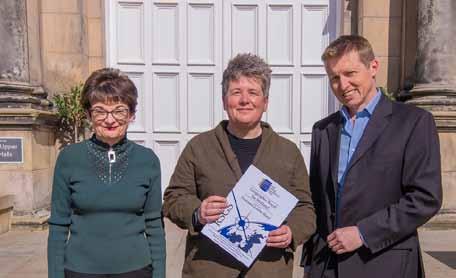
I want to share my enthusiasm for Geography. I think in the Geographer Royal role I can help to amplify some of the excellent work that is being spearheaded by RSGS in education and public communication. Initially I will take time to meet with different parts of the geography community to find out what I can do to support them. For instance, there could be better communications between school and university-based geographers in Scotland. Secondly, I want to use the platform to find ways to promote the skills and insights from geographers to policy-makers. We have the benefit in Scotland of being relatively closer to decision-makers, but the work that RSGS has been doing to connect up geography societies across the globe gives us the chance to have influence beyond Scotland too. And finally, I want to try to increase public awareness of Geography. I am currently organising a schools’ essay competition for RSGS that I hope will be promoted at the Edinburgh International Book Festival in August.
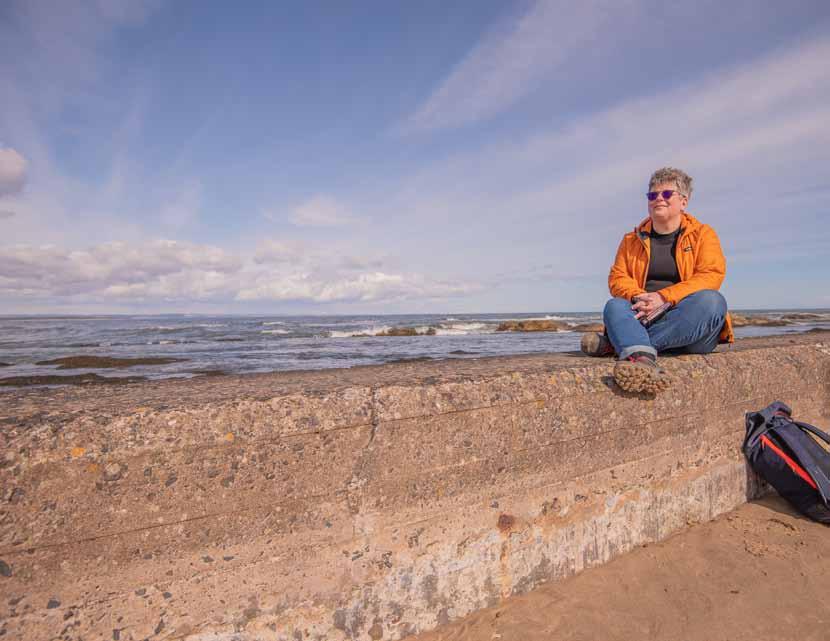
“I first got interested in Geography because of the enthusiasm of a wonderful teacher.”Professor Jo Sharp at St Andrews beach. L-R: St Andrews University Principal Professor Sally Mapstone, Professor Jo Sharp, RSGS Chief Executive Mike Robinson.
Putin’s war in Ukraine is deplorable on every level, and our thoughts and prayers are with the people of Ukraine who need our compassion and practical support as a matter of urgency, as do their neighbours and allies.

It is desperately sad to watch the invasion of a sovereign nation, and the heroism and the statesmanship of Ukraine’s leadership is breath-taking. So is the heroism of the many in Russia who oppose this war, risking their own lives and positions to protest the invasion and the regime that drives it. Many Russians have taken to the streets, academics have posted a critical open letter (since blocked by the Russian state, of course), and journalists have tried to reveal what is going on. This feels like Putin’s war, not Russia’s. Many Russians have also sought sanctuary overseas, fearful of the repercussions and censorship.
Putin sowed the seeds of this invasion in 2014, invading Crimea and destabilising eastern provinces of Ukraine. He was angry that the Ukrainian people rejected the Ukrainian President Yanukovych, whom he viewed as a staunch ally and friend to Russia. The populus, though, were sickened by the corruption they observed in high office, from all sides. During the Maidan Revolution in 2014, they chose the promise of European democracy over Russia’s kleptocracy and corruption, as a way to liberate their economy and democracy and escape their dependency on Russia. But by choosing to turn to Europe they turned their back on Russia, and Putin simply saw the creeping encroachment of NATO and the European Union closer and closer to Moscow.
This is a tragic and awful time for Ukraine. It is a hugely worrying time for Europe as the threat of escalation is ever present. But these are very high stakes and it is also potentially the end game for Putin’s regime, as Russia risks becoming increasingly isolated and politically divided.
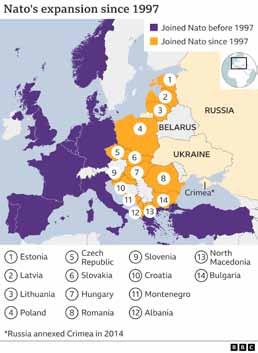

As corresponding members of the International Geographical Union, we are wholly in support of its Declaration on the Ukraine crisis.
“The International Geographical Union notes with dismay the alarming situation in Ukraine and finds the invasion of a sovereign democratic nation by Russian forces senseless and unacceptable. These actions are undermining global security and stability and have led to deplorable human suffering and loss of life. In the interests of peace and stability in international relations, we call for an end to the hostilities and for a resolution
that respects the sovereignty of Ukraine and all its people.
“The International Geographical Union stands in solidarity with the people of Ukraine and its community of geographers, along with those in Russia who are courageously manifesting their rejection of war. We wish the citizens of Ukraine great strength in resisting and overcoming this shocking crisis.”
Around 7,000 Russian scientists and scientific journalists, including c75 geography academics, defied the authorities by issuing an open letter to Putin opposing the war, before it was taken down. It stated that “The responsibility for unleashing a new war in Europe lies entirely with Russia... There is no rational justification for this war... Attempts to use the situation in Donbass as a pretext for launching a military operation do not inspire any confidence. It is clear that Ukraine does not pose a threat to the security of our country. The war against her is unfair and frankly senseless,” and demanding an immediate halt to all military operations directed against Ukraine.
For further background, our summer 2014 edition of The Geographer magazine, published soon after the annexation of Crimea, was all about Ukraine and energy security. If you do not still have a copy, you can view it online via rsgs.org/the-geographer

Mike Robinson, RSGS Chief Executive
“Putin sowed the seeds of this invasion in 2014.”
Within the first month of Russia’s invasion of Ukraine, it is estimated that around ten million Ukrainians became displaced from their homes, including around 3.5 million who sought refuge in neighbouring countries. This has been described as the largest and most rapid movement of people in Europe since WWII. While the shortterm impacts of the war in Ukraine are clear, the mass displacement of people is likely to have long-term implications for the country, depending on how Ukraine emerges from the conflict, and, in turn, to influence the decisions made by refugees about whether or not they will return following the war.
Since gaining independence from the Soviet Union in 1991, Ukraine’s population has been in decline, decreasing from 52 million in 1991 to around 41 million in 2021. While some of this decline can be attributed to the annexation of Crimea by Russia in 2014 and the ongoing war in the Donbas region of Ukraine, natural population change has been the primary driver of population decline since the early 90s, with deaths outnumbering births since 1993. Despite marginally positive net migration observed since the mid-2000s, low fertility levels have continued to result in population decline.
To explore the effect that Russia’s invasion of Ukraine could have on the future population of the country over the next 20 years, we conducted a series of population projections to compare a range of scenarios to levels of population change we would expect if current trends in fertility, mortality and migration were to continue in the absence of war. For these projections, four scenarios were imagined, not to predict possible outcomes of the conflict, but to illustrate how patterns of forced migration out of the country and the rate of return of refugees would impact population size and structure.
The baseline projection assumes the continuation of trends observed in 2021; the scenarios assume either 2.5 or five million refugees leaving Ukraine, and either 10% or 90% returning. While the exact demographics of the refugees is still unknown, this group is largely made up of young women and children, with men aged between 18 60 prohibited from leaving the country to reinforce military defences. We also assume that young men currently in Ukraine will later reunite with their displaced families abroad. For example, if 10% of refugees will stay abroad for a long time period, each woman will be joined by a man of the same age group. The number of military deaths were distributed among men in their 20s, while civilian deaths were shared proportionally across age and gender and informed by the latest breakdown of civilian deaths from the United Nations.
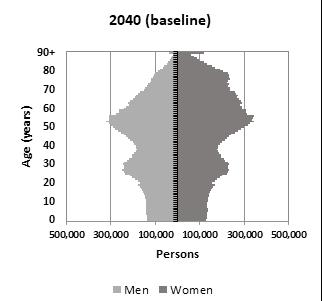
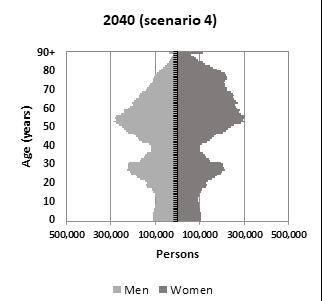
Across all scenarios, including the baseline, projections suggest that the population of Ukraine is set to further decline between 2020 and 2040. However, the scale of this decline varies depending on the number of refugees leaving Ukraine and the proportion that return. The baseline projection suggests that the population will decline by around 16% by 2040, compared to 33% in scenario 4 with five million refugees and only 10% of them returning. These projections also suggest that the conflict in Ukraine could exacerbate the country’s already ageing population, with
dramatic changes in the age structure of the projected population. All scenarios considering the effect of the war show a further decline in the size of the working age population and of children, while the share of the elderly population is set to increase.
The comparison shown in the population pyramid diagram illustrates and summarises the main changes in Ukraine’s population between the baseline scenario and scenario 4. We see a declining and ageing population. Most importantly, the decline and ageing of Ukraine’s population will be pronounced, with increasing war casualties and a large refugee population staying abroad.
These projections show that the effect of the war is likely to exacerbate Ukraine’s population decline and increase the rate of population ageing over the next two decades. Should large numbers of refugees fail to return following the war due to potential undesirable political and economic factors, Ukraine’s population may decrease by up to a third as projected by the most extreme scenario set out in this analysis. In particular, these projections suggest that the working age population and the share of children are likely to decline most significantly, with adults over 60 making up an increasing proportion of the population.
These findings emphasise the importance of refugees returning to Ukraine and highlight the importance of rebuilding Ukraine following the war in such a way as to enable and attract refugees to return. This would minimise the serious demographic consequences which could be incurred as a result of the conflict.
This study has been published as a working paper and can be accessed at t.co/piFrIRVFQ8
Dr Sarah Christison, Dr Chia Liu, Dr Júlia Mikolai, Professor Hill Kulu, School of Geography and Sustainable Development,University
of St Andrews, and ESRC Centre for Population Change
“The effect of the war is likely to increase the rate of population ageing over the next two decades.”





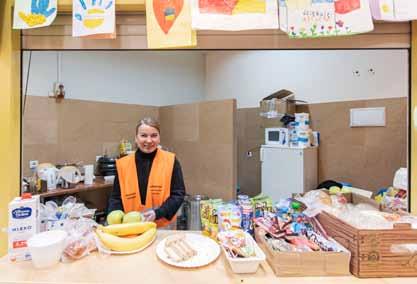




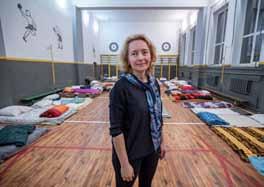




1. Thousands of refugees arrive at Medyka border crossing, Poland, having queued for dozens of hours in the cold. | 2 A young mother cries as she has just safely boarded a bus that will transport her further into Poland. | 3. Even after midnight, a Polish volunteer prepares and provides meals and drinks for refugees at Rzeszow Railway Station, Poland. | 4. Maria in a train at Lviv Railway Station, Ukraine, going to Poland; she didn’t want to leave home. | 5. A train from Ukraine carrying mostly women and children, just arrived at Przemyśl Railway Station, Poland. | 6. Having participated in rescue missions, Georgian volunteer Domenic Mango rests at KorczowaKrakovets Humanitarian Aid Centre in Poland before returning to Ukraine. | 7. An emotional new arrival at Przemyśl Railway Station. | 8. Alone and lost at Medyka. | 9. Waiting in line at Medyka for a bus to a registration centre; some people were happy to be safe, other cried with pain and stress. | 10. Olya, her sister-in-law and their kids breakfasting at a motel at Korczowa-Krakovets border crossing. | 11. A Scottish volunteer prepares warm drinks at Medyka. | 12. Lydia, teacher in a small school in Nakonechne, Ukraine, converted the school to a shelter for the displaced. | 13. Polish volunteers provide warm meals and drinks for refugees at Rzeszow Railway Station. | 14. A lady’s cat, just arrived at Korczowa-Krakovets Humanitarian Aid Centre, Poland. | 15. A safe space for mothers with their babies in the upper level of Lviv Railway Station. | 16. A mother and daughter reunite at Rzeszow Railway Station.
All images © Nicolas Economou. You can see more of Nicolas’s wonderful and moving photographs on Facebook (www.facebook. com/photographynicolaseco) and Instagram (www.instagram.com/ nicolas_eco).


2021 closed with yet another year of record forciblydisplaced persons, and the climate crisis played a major role driving over 84 million people out of their homes.
We already know that, in 2020, three times as many people (30.7 million) were internally displaced by the climate crisis than by conflict or violence. Numbers over the last decade don’t fare any better either, where twice as much displacement was triggered by weather-related events than conflict or violence. The trends tell us that people are being forcibly displaced, forced to migrate and, wherever possible, migrating to survive.
All eyes were on Afghanistan in 2021, with millions more displaced and fewer evacuated, as the Taliban regained control of the country. While power shifted, climate vulnerabilities continued, where one of the country’s worst droughts, in its second year, has displaced many and rendered over 50% of the country food-insecure.
Many have left for Iran, some parents sending their children ahead to help the remaining family left behind to survive. Others are forced to migrate, but leave their children behind in yet another option for family survival. One of the displaced, Juma Gul, says, “We have nothing, sometimes we find food and sometimes not. We eat only dry bread and green tea. We can’t buy flour or rice, it’s too expensive.”
Pakistan is one of the most climate-vulnerable countries in the world, even if its 2020 share of global emissions is less than 1%. Last July, Jacobabad in the Sindh Province surpassed temperatures too hot for humans to withstand. Climate displacement and climate-induced migration will only increase under present conditions, where one report estimates climate inaction could result in as many as 600,000 displaced people by 2030. Beyond the obvious humanitarian crisis such displacement and migration could bear for the country and region, there’s also the geopolitical shifts that follow demographic shifts as populations move. That’s exactly what has happened in Iraq, where droughtinduced displacement from rural to urban centres has shifted demographics in the country, where the population
has hit its highest peak of 41 million, with nearly 70% of the country residing in urban centres. The population is projected to double by 2050, straining resources, including water supplies. Water scarcity already displaced more than 200,000 Iraqis in 2019, and below-average rainfall, along with rising temperatures, expected to rise by two degrees over the next decades, are just some of the unjust climate impacts that lie ahead.
Somalia is no stranger to conflict nor drought, but its latest drought is like none other faced before, according to Oxfam’s local NGO partner WASDA. “I have been involved in droughts since 1991 and I have never seen a drought that has impacted people as badly as has this one,” executive director Aydrus Daar told Oxfam. “Many pastoralists have lost 100% of their livestock. This has never occurred in living history.”
Three failed rainy seasons in a row have failed to yield crops or sustain livestock and drinking water, leaving 90% of the country in water shortages and forcing thousands to flee for survival, searching the country for water and food, and forcing a federal government emergency declaration in November. Over 5.9 million Somalis are in need of humanitarian assistance due to conflict, climate shocks, and the effects of the Covid-19 pandemic. Over 116,000 people were displaced by floods between October 2020 and March 2021. Over ten years of drought has left over half the hungry deeply food insecure.
Climate-related displacement is happening all over the world, regardless of country GDP, but there’s a need to recognise the particular vulnerability within low and middle-income countries that are battling mutually reinforcing crises that heighten their vulnerability. In places where entire populations are impacted by extreme poverty, economic inequality, disease, disasters, conflicts and more, governments and people are left with increasingly fewer tools and options, let alone solutions.
Those who can migrate do so to survive, but by no means do most find better situations. Climate refugees and climate migrants are often victims of exploitation, even slavery. Still other migrants may find the move in search of employment from rural to urban centres has yielded even worse conditions than those at home. Those who can’t afford to migrate – a far larger number – are increasingly trapped in terrible situations.
Amali Tower, Founder & Executive Director, Climate Refugees
“Climate-related displacement is happening all over the world.”Image by Konevi from Pixabay
 Matt Raulerson, Contributor, Climate Refugees
Matt Raulerson, Contributor, Climate Refugees
At the time of writing, it has been one month since Russia invaded Ukraine, causing 3.5 million people to flee the country, an overwhelming majority heading west into the European Union (EU). As the smoke has cleared from the initial onset of the invasion, a picture has begun to emerge highlighting the either ‘unusually generous or overtly racist’ stance taken by western media and the EU towards Ukrainian refugees in contrast to other non-Ukrainian refugees.
When those displaced by climate-induced famine or conflict come from Africa, the Middle East or South Asia seeking refuge, can they expect such a warm reception from the EU and other wealthy nations as Ukrainian nationals have received? Sadly, refugee policy in Europe and other wealthy western nations have made it clear this is not the new status quo in handling refugees.
“These people are Europeans; these people are intelligent. They are educated people... This is not the refugee wave we have been used to, people we were not sure about their identity, people with unclear pasts, who could have been even terrorists,” said Bulgarian Prime Minister Kiril Petkov.
“Ukraine isn’t a place, with all due respect, like Iraq or Afghanistan, that has seen conflict raging for decades. This is a relatively civilised, relatively European – I have to choose those words carefully, too – city, one where you wouldn’t expect that, or hope that it’s going to happen,” said Charlie D’Agata of CBS News.
These sentiments of ‘European’ refugees being ideal and valuable migrants are being echoed at the borders as reports are becoming widespread of non-Ukrainian refugees facing discrimination and racism while trying to cross into the EU. Reports like one highlighting “dehumanising treatment of international students from Africa, South Asia, and the Middle East” have been coming to international attention one by one, highlighting blatant discrimination by border agents. For days some of these refugees were left on the border while their Ukrainian counterparts could pass. The African Union has had so many reports of African nationals being denied passage that they as a whole have openly condemned the mistreatment of Africans attempting to flee Ukraine.

The EU hopes to resolve this issue through the Temporary Protection Directive which was passed recently in an effort by EU member states to make passage more accessible into the EU from the conflict in Ukraine.
Racist and xenophobic perceptions of refugees plague border policies across the EU, US and Canada, and the disparity
with which Ukrainians and non-Ukrainians have been handled in this context is a dire warning of how climate refugees can expect to be handled as they are forced from their homes.
Poland only just months ago invested $400 million to construct a wall along its Belarussian border to prevent predominately Muslim asylum seekers from entering. An estimated 20,000 migrants were involved in that border crisis, that resulted in the deaths of 21 and Poland being accused of violating international humanitarian laws in the process. Poland just recently announced an ‘open door’ policy for millions of Ukrainian refugees, but many of the special protections and provisions granted to Ukrainians are not applicable to other nationalities.
As climate change continues to fuel disasters, conflict and famine in vulnerable countries around the globe, populations will become increasingly displaced. Populations forced from their homes and countries through no choice of their own will seek refuge, and wealthy nations are showing through the current polarisation of Ukrainian versus non-Ukrainian refugees that, in the future, they will not receive all refugees, if any, equally. Through refusal to bear the costs of helping countries adapt to climate change loss and damage suffered by vulnerable populations around the globe, wealthy nations are all but ensuring the future displacement of millions. At the same time as denying these climate frontline nations the financial support they are both owed and need to adapt to climate change, wealthy nations are signalling they will not take these populations in when they are forced from their homes.
This is a clear shunning of responsibility on the part of wealthy high-emitting nations and a perpetuation of climate injustice. The rude awakening society has witnessed in the form of the Ukrainian versus non-Ukrainian refugee bias should prompt conversation now about the future we want and how we as a society need to do better in meeting the needs of all refugees and not just those we can empathise with.
“Racist and xenophobic perceptions of refugees plague border policies.”Image by David Peterson from Pixabay
During SCIAF’s WEE BOX, BIG CHANGE appeal in 2018, we raised £3.1 million, including £1.5 million of match funding from the UK government. This provided us and our partners, Development and Partnership in Action (DPA), with the resources to impact the lives of 46,838 people in Cambodia’s poorest regions. The programme concluded at the end of 2021 and, despite the exceptional challenges thrown up by the Covid-19 pandemic, it has seen great success.
As is the case with all SCIAF’s work, this programme was designed collaboratively with local partners and the people themselves, ensuring we uphold their dignity and empower participants to take control of their own futures. Our ‘Integral Human Development’ model also ensures that we don’t just limit our support to people’s physical and material needs – we focus on all spheres of life: the economic, political, cultural, personal and spiritual.
In the rural provinces of Strung Treng and Kampong Thom, most people farm to survive. Those who have their own land grow rice, cassava, and vegetables. Those without land rely on communal areas for cattle-rearing, chickens, gathering products from their forests, and fishing the rivers of the Mekong Delta.
At the start of the programme, access to clean water and safe sanitation were limited in the communities, with many people still practising open defecation. Schools had limited handwashing facilities, family farms were unable to provide enough food, local environments were being devastated by illegal practices, and women had little voice at home or in their communities.
Today, the practice of open defecation has almost entirely ended in the target communities, with the majority of families now able to access hygienic latrines. Much of this success is down to the implementation of Open Defecation Mapping, an approach which used spatial analysis to map where this practice occurred most often, and where new facilities would be best utilised.
In addition, schools have received new handwashing facilities and hygiene education, while families in the project areas no longer have to boil groundwater. Instead, they can access clean drinking water through the construction of drinking water stations which, now owned by the community, sell affordable 20-litre bottles of water.
Protecting natural resources for these communities has been a key component of the programme’s success and, moving forward, represents one of the best ways to secure the future
Our WEE BOX appeal in Cambodia has made a BIG CHANGE

46,838 lives changed in rural Cambodia
2,524 families now earn more money
1,515 families have enough food for the entire year
3,150 people have access to toilets for the first time
2,221 school children use new handwashing facilities
2,735 households have access to clean bottled water
2,638 women empowered by gender awareness meetings
in a world impacted by climate change. The programme helped to legally protect over 5,000 hectares in Community Protected Areas, and supported communities to develop plans for the continued conservation of the environment with local authorities. Locals carried out patrols to prevent illegal hunting, fishing, and deforestation.
Families also increased their production of staples such as rice and cassava, as well as vegetable crops. And, through the creation of farmer groups and cooperatives, families were able to pool their harvests and sell collectively. This enabled them to set up contracts with local and national buyers, and negotiate improved prices for their crops. The results are encouraging, with family incomes increasing by the equivalent of between £750 and £1,500 a year or, on average, by 480%.
“Last year, we made more than £180 from selling our rice alone, and we used the money to buy food to feed the pigs,” said a smiling Lorn Vean, one of the project participants. Her husband Sat added, “Before, our family did not have enough to eat. The rice we harvested could not feed our family. After receiving training from SCIAF and DPA, we are able feed ourselves, and sell the rest.”
To address inequalities between men and women in the region, hundreds of meetings were arranged in the community focusing on women’s rights, each of which covered issues such as domestic abuse and gender law. At the close of the project, 2,638 women stated they felt empowered by this approach, having had the opportunity to discuss topics important to them in a safe, secure and informative setting.
Of course, the Covid-19 pandemic caused significant challenges for the project. DPA, our local partner, was forced to innovate and adapt in order to support each community. They provided training to raise awareness about the importance of social distancing and handwashing, distributed facemasks and soap, and provided food packages to the most vulnerable households. All in, our Covid-19 prevention work reached 22,000 people.
Though this UK Aid Match funded project has now come to an end, SCIAF remains committed to changing lives in Cambodia and building on the progress made to date. Today, thanks to the generosity of people in Scotland, and with the support of the UK government, families in some of the poorest parts of Cambodia have more money, more food, more water and more dignity.
“Access to clean water and safe sanitation were limited.”
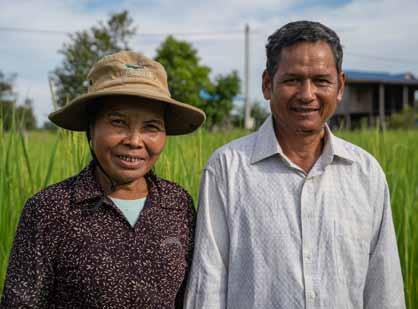
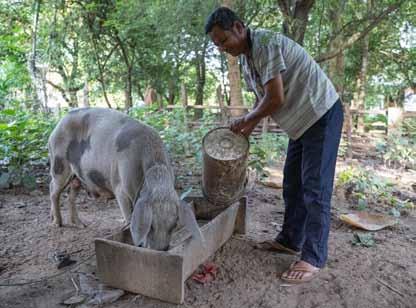
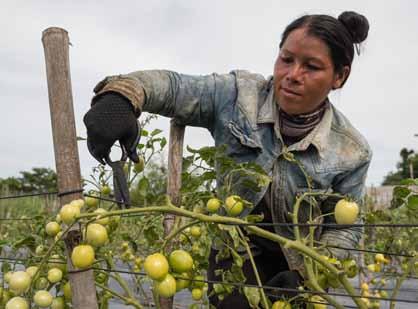
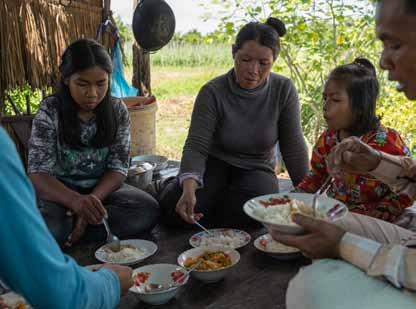
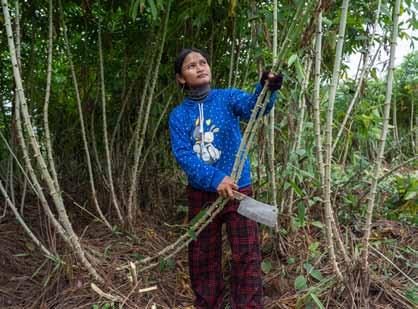
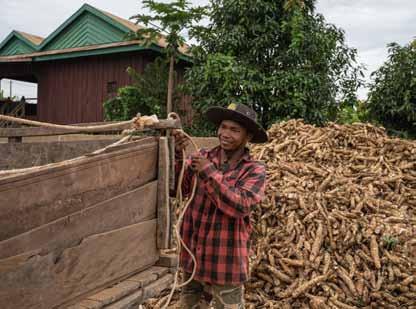
Extreme inequality is a major challenge. Global wealth is concentrated amongst a few, hundreds of millions still live in extreme poverty, and half of the global population lives on less than US$3.50 in purchasing power parity (PPP) per day.
To tackle these persistent problems, the first of the United Nations’ Sustainable Development Goals (SDGs) aims to end poverty in all its forms everywhere by 2030. In the same year as the SDGs were established, the global community adopted the Paris Climate Agreement (PCA) and proposed to keep global temperature increase below 2°C or 1.5°C. This leaves humanity with a limited carbon budget to emit and, thus, requires significant reductions of yearly carbon emissions. Yet, due to the unequal distribution of wealth, income and consumption, there is also an unequal distribution of carbon footprints. The carbon footprints are defined as the amount of carbon emissions caused by the production throughout global supply chains to provide for an individual’s consumption. Despite a decrease of carbon inequality in recent decades, enormous differences between rich and poor remain, and the growth of absolute CO2 emissions was mainly caused by increasing carbon footprints of the highincome groups.
The two agreements, SDGs and PCA, do not describe in any way how these goals can be achieved (without one jeopardising the other) or how the burden of responsibility may be shared. Is it possible to lift millions of people out of poverty without a substantial increase of carbon emissions? This is especially pertinent given that developed countries are responsible for the vast majority of fossil fuel-related CO2 emissions since the beginning of the industrial revolution, and the fact that less than a fifth of the global population shares ‘First World’ living standards.
To answer these questions, we want first to look behind the scenes and quantify the connections between consumption and carbon emissions across the world.
In order to get insights into the extent of the carbon inequality, we calculated the amount of CO2 associated with each activity or product consumed – including both direct and indirect emissions – across households, governments and companies. By linking spending to carbon footprints, we were able to distinguish the worst and least polluters in every country. The figure shows carbon footprints for each expenditure decile in nine major world regions.

Each bubble represents the carbon footprint of 10% of the population (from the poorest 10% to the richest 10%). The colour of the bubble indicates how much money a person in this decile spends per year (in US dollars, in 2014 PPP); the size of the bubble shows the number of people in each decile
This visualizes the enormous inequalities in carbon footprints. To give some examples in numbers: the top 1% are responsible for about 15% of global emissions, while the bottom half are only responsible for about 10% of global emissions. In Europe, an average person emits about six tonnes of carbon per year, whereas most people in poverty emit less than one tonne. Or, the average American has a footprint 11 times larger than that of the average Indian. And the super-rich of this world have carbon emissions of over one thousand tonnes Stated in simple terms, the higher the income the higher people’s footprint.
To address if the two goals are compatible, we then calculated the additional carbon caused by higher levels of income for people currently living in poverty (ie, being above different poverty lines) and associated expenditure patterns. The results show that lifting over one billion people out of poverty worldwide would increase the global carbon emissions by 1.6 to 2.1%. In other words, the good news is that we do not have to worry about carbon emissions when striving to lift people out of extreme poverty. The bad news is that a tiny minority of rich people emit most of the carbon that is driving global warming. What this basically means is that in order to reach the Paris Agreement goals, rich nations will have to question their current levels of consumption, to achieve climate goals and to give poorer countries the opportunity to lift their people from poverty. Uncoupling economic growth from carbon emissions is difficult; only a few of the richest countries have achieved it. This then raises questions on how to define overconsumption, what are reasonable needs (given that today’s luxury items are tomorrow’s necessities), and how to stay within planetary boundaries.
Consumption-based carbon footprints for each expenditure decile in nine major world regions. Ten bubbles on each line show the poorest 10% to the richest 10%. The larger the bubble, the bigger the population; the darker the bubble, the higher the average yearly expenditure.
Professor Klaus Hubacek, Benedikt Bruckner, Dr Yuli Shan, Integrated Research on Energy, Environment and Society (IREES), Energy and Sustainability Research Institute Groningen, University of Groningen
“We do not have to worry about carbon emissions when striving to lift people out of extreme poverty.”
It took our human population until 1800 to reach one billion. In just 220 years, thanks to increasing longevity and declining child mortality, we added close to another seven billion. This huge and rapid increase did not come without a cost, however.
Our impact on the planet is now so significant that scientists have declared a new age: the Anthropocene. No place on Earth is safe from our massive human footprint. According to the United Nations (UN), three-quarters of all land and two-thirds of marine areas have been damaged by human activity, and one million species are estimated to be at risk of extinction. Our relentless burning of fossil fuels has precipitated a climate crisis, and the UN recently declared a third planetary crisis: pollution.
Even though environmental awareness has never been greater, we are still moving in the wrong direction: the rate of biodiversity loss is accelerating, and both greenhouse gas emissions and air and water pollution are increasing. In addition, we are depleting natural resources faster than ever before. This is because governments are failing to address the root causes of our planetary crises: our numbers and unsustainable consumption habits.
The only true, long-term solution is to put an end to our overshoot of Earth’s limits. We need to overhaul our economies, end overconsumption in wealthy nations, and stabilise our population as soon as is ethically possible. The latter is rarely talked about but is in fact a low-hanging fruit: slowing population growth can be done in a way that benefits everyone, everywhere.
Wherever women have the power to choose what happens to their bodies and lives, fertility rates (the number of children per woman) plummet. Unfortunately, almost half of women in low- to middle-income countries have no decision-making power regarding their health, contraceptive use and sex lives. The countries with the highest fertility rates, such as the Sahel region of Africa, also have the worst gender equality scores in the world.
Empowering women by challenging harmful patriarchal norms and removing barriers to girls’ education and reproductive health services is one of the best things we can do for both people and planet. Aside from the dampening effect on population growth, enabling women to participate in decision making has been shown to lead to improved environmental outcomes and community resilience.
Efforts to advance gender equality remain severely underfunded, however. The UN estimates that ending the worst gender injustices, including gender-based violence, child marriage, and the unmet need for modern contraception, would cost US$264 billion – less than a sixth of annual global military spending. Yet the funding gap between what is needed and what has been pledged by world leaders remains huge, at $222 billion. With several countries now sliding backwards on women’s rights, our population projected to reach close to 11 billion by the end of the century, and worsening climate impacts, especially in the poorest, fastest-growing nations, it is more crucial than ever before to close this funding gap.
Population is not just an issue in the Global South; in the wealthy Global North, one of the most impactful ‘eco-actions’ we can take as individuals is to choose a small family. According to Project Drawdown, which ranks climate solutions based on their effectiveness, achieving the UN’s medium population projection by 2050 (9.7 billion) instead of its high one (10.6 billion) would result in an emissions reduction of 85.4 gigatonnes, making it the second most effective solution in limiting global warming to 2°C (after ending food waste). Around 45% of these emissions savings come from slower population growth in high-income countries. Stabilising our population through empowering solutions is morally essential and paves the way for a happier, healthier future for people and nature. The sooner we act, the brighter our prospects on our one-and-only planet.

“No place on Earth is safe from our massive human footprint.”
Many wondered whether the Covid lockdowns would lead to a baby boom or a bust. We finally have some answers; for the UK, at least.
Broadly, provisional data from the Office for National Statistics suggests there was a temporary decline in babies conceived during the first three months of the first lockdown in 2020, but then the fertility rate rebounded to levels above those seen in previous years. Let’s take a closer look. The earliest we would have expected Covid to affect people’s decisions to become pregnant would have been February 2020, influencing births on average from November 2020. In the graphs, the number of monthly births are plotted for the years 2018 21; you can see that, before the pandemic, the number of births had been falling across the UK.
By 2019, the average fertility rate for Scotland was 1.37 births per woman, the lowest level ever recorded. Fertility rates were slightly higher in England and Wales (1.65) and Northern Ireland (1.82) than in Scotland, but again these levels were some of the lowest ever recorded. The onset of the pandemic was initially associated with a decline in the number of births, particularly from November 2020 to February 2021. Yet from March 2021 onward, the number of monthly births recovered and sometimes exceeded 2019 levels, particularly in the last quarter of 2021. This is despite a second wave of the pandemic in the UK in late 2020 and early 2021.

For England and Wales, the average fertility rate in 2021 was 1.61 children per woman compared with 1.58 in 2020; the first time since 2012 this figure has increased from one year to the next. This recovery might be explained by births taking place where conception had been postponed during the first lockdown. Or perhaps birth rates had reached their lowest point and would have increased anyway.

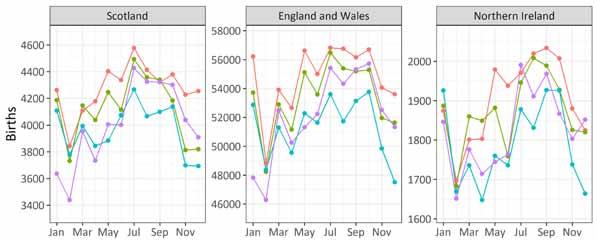
We can find out more about what’s happened if we look at trends in birth rates by mother’s age. These age-specific fertility rates are, at the time of writing, only published up to 2021 for England and Wales, and are only available for women. This data shows that the effect of the pandemic on childbearing in England and Wales differed by age. Among women aged under 25, fertility rates fell and continued to fall through 2020 and 2021. Among women in their 30s, fertility rates recovered in 2021 after falling in 2020. Rates for those
in their early 40s have remained stable at a low level. So, what might be happening? In a research article written in 2021 (onlinelibrary.wiley.com/doi/full/10.1002/psp.2546), we speculated that the pandemic would affect childbearing differently based on a woman’s age. We considered several ways the pandemic might decrease fertility rates. For example, national lockdowns sharply reduced socialising; young adults may have been particularly affected by this. Meanwhile, increased uncertainties associated with the economic fallout of the pandemic might have deterred people from planning a baby. We also put forward reasons why the pandemic may increase childbearing, including increased time spent together and a focus on home life among established couples, encouraging people in longerterm relationships to have children they may not otherwise have had, or might have had at a later time. Among younger adults, we found more reasons for a decline in childbearing than an increase, while among slightly older people we found more reasons to expect an increase. The observed agespecific fertility trends are consistent with our predictions, though from this data we cannot know whether the reasons we proposed were exactly correct.
Historical evidence following the 2008 recession from other European countries suggests that it is younger people who are most likely to experience a decline in childbearing in response to shocks and crises. Younger women have more opportunities to postpone their childbearing in response to uncertainties, because they have more time to catch up. Young people have been uniquely affected by the pandemic, being more likely to lose their jobs, or to change their living arrangements, often returning to their parents’ home. Among slightly older women, the pandemic could have increased fertility, for example through more time spent with their partner, and changes in work-life balance.
So what might the future hold in terms of fertility in the UK? Will the increasing birth rates among those in their 30s continue, with previously postponed births caught up at later ages? Or is the pandemic bounce-back in childbearing a blip in an otherwise downward trend in fertility? Increased economic uncertainty, difficulties in securing stable, affordable housing, a greater awareness of environmental concerns, and worries about global security are all likely to diminish certain people’s desires to have children. Ultimately, it will be some years before we know whether the pandemic’s effects on childbearing are temporary or will be longer lasting.
Professor Ann Berrington, Professor of Demography, and Dr Joanne Ellison, Research Fellow, Centre for Population Change, University of Southampton
“We speculated that the pandemic would affect childbearing differently based on a woman’s age.”Data (all 2022) from National Records of Scotland, Office for National Statistics, and Northern Ireland Statistics and Research Agency; author provided.
I’m a social demographer by trade (we traffic mostly in numbers), but I’m starting with a story. It relates how the combination of three population trends (declining fertility, increasing migration, and longer life expectancies) and the Covid-19 pandemic should make policymakers very concerned about social isolation and loneliness. I’ll begin at the end and not go in a straight line.
My mum died at age 68 of Alzheimer’s disease. Mum was one of the early baby-boomers, born in Edinburgh in 1946 to Grampie, who had just returned from The War (to end all wars they thought), and Granny, who had already been raising their hastily-conceived, pre-war baby. Granny was born in the (now decrepit) Lundin Links Hotel to a hard-working mum and a dad who died (as far as familial whispers allow) rather too close to a gutter and (whisper whisper) rather too inebriated. Thus Granny, the eldest child, dropped school to help support the family. By her 20s, she had made it; working at Jenners on Edinburgh’s Princes Street.
Fast forward: after the war, Grampie owned a small print shop. This must mean they were doing ok financially, but I can tell you that Mum never once served us liver or beans on toast; she was done with that (though she retained many other frugalities). Mum did not love school and left as soon as possible.
Fast forward again: Mum lived in the USA, did not work outside the home, was widowed at the age of 45, and never re-partnered. Her three daughters went off to uni, then to three distant states. Latterly, she picked up a part-time job at a local nursery. Two daughters are childless/free (as you please). The California daughter had two children. Mum lived on the East Coast. We gathered as often as possible; three times a year or so.
Final fast forward: by her late 50s, we realised that, despite her still-sharp wit and superior coping tactics, Mum’s brain was not functioning well enough to maintain a household. Her last eight years of life, she lived with my sister and then me, far from her friends or her house, both of which she had loved.
Some elements of my family’s all-too-common story might resonate with you. After all, the post-WWII baby boom, of which my mum was a part, meant the Boomers held ‘the largest generation’ title for quite some time (until the Millennials). Rationing and general food scarcity affected WWII-era cohorts (and their Great Depression and WWI-era predecessors) both nutritionally and emotionally, and I would guess many of you experienced or inherited those traumas. Parents’ education is highly predictive of children’s education (my granny and my mum). Higher-educated children (my sisters
and me) are more likely to be far-flung and less likely to produce the requisite number of grandchildren. You might have noticed that women are less likely to re-partner than men, and single-occupancy households are becoming more common. Lastly, the prevalence of Alzheimer’s disease is rising, creating ‘the Sandwich Generation’. And, for those of you who are versed in this research, I expect you saw some features from social demography peeking out at you from within the anecdote. Not only the ‘big three’ population processes – fertility, migration (internal and international), and mortality – but here also the embodiment of health inequities research. Scotland’s excess mortality, especially premature mortality (20% higher even than our southern neighbour), has inspired reams of papers (an entire issue of The Geographer in 2016!). And, alcoholrelated mortality (thinking here of my great-grandfather) is around 4.5 times higher than England, even accounting for socio-economic and behavioural characteristics. Indeed, my story presents a smörgåsbord of predictors of poor later-life health, my mum accumulating disadvantages all the way from early-life hardship through social isolation and loneliness in later life. It is this last point that will bring us full circle to the article’s title. Even before the Covid-19 pandemic compelled isolation, the UK government recognised loneliness as “one of the greatest public health challenges of our time,” with Scotland and England experimenting with strategies to address the perceived crisis. The concern is justified (even if the strategies need more work), as it is informed by evidence of social isolation and loneliness’s detrimental health impacts, ranging from low subjective well-being to higher dementia risk and shorter life expectancy.
In sum, age-old socio-political inequalities set the stage for population trends – smaller families, geographic mobility, and longer life expectancies (ie, more years in at-risk ages for chronic diseases such as Alzheimer’s) – to combine with Covid-19 to have potentially devastating, long-lasting impacts on health through increasing risk of social isolation and loneliness, especially for those who may be already vulnerable, eg, those socio-economically disadvantaged and/ or rural. Preventative measures should be a top concern for policymakers, yet crafting efficacious interventions depends on understanding the underlying risk factors and the mechanisms connecting isolation with loneliness and both with poor health.
Stay tuned for our forthcoming work on exactly this.

“My story presents a smörgåsbord of predictors of poor later-life health.”Image by Gerd Altmann from Pixabay
 Jo Woolf FRSGS, RSGS Writer-in-Residence
Jo Woolf FRSGS, RSGS Writer-in-Residence
“He was never tired, always cheerful…”
“…able, zealous, conscientious and energetic…”
“…keen in taking up a new train of thought or line of work, and persevering in carrying it out.”
These are all qualities which we readily associate with Sir Ernest Shackleton, whose courage illuminates one of the most heroic stories in the history of polar exploration. But these tributes are, in fact, quotes from Shackleton’s formal application for the post of Secretary to RSGS, which is dated 4th December 1903, almost 11 years before he embarked on the Endurance expedition.
In January 1904, Shackleton began work at the RSGS offices in Queen Street, Edinburgh. Aged 29, freshly returned from the Antarctic under the command of Robert Falcon Scott, Shackleton embodied a powerful blend of charm and vigour, and he had no patience with time-honoured office practices if they stood in the way of progress. At heart, Shackleton was a communicator, and he applied himself energetically to the task of boosting the Society’s public image.
While membership figures rose and lecture audiences increased, Shackleton’s destiny lay elsewhere, and he knew it. Irresistibly, his thoughts turned back to the Antarctic. In November 1909, in the Usher Hall, Edinburgh, RSGS members gathered to witness their former Secretary receiving the Livingstone Medal “in recognition of his Antarctic explorations.” Shackleton’s Nimrod expedition had achieved a new ‘Furthest South’ but it had fallen short of the Pole, and as he graciously accepted the award his secret sense of failure irked him enormously.
Inevitably, five years later the Antarctic drew him back, and this time Shackleton was aiming for more than just the Pole. A map held in RSGS archives clearly illustrates his intention of crossing the entire Antarctic continent. But in November 1915 that dream was crushed in the most graphic way imaginable, and Shackleton could only watch helplessly as his beloved Endurance lost her valiant battle with the ice. In his private diary, he recalled that her stern was the last to go under water. He added, “I cannot write about it.”
For the sake of his men, Shackleton focused on survival. While the ship was stuck fast they had salvaged as much as they could carry, and now they prepared to move on. Shackleton’s family motto, Fortitudine Vincimus (‘By Endurance We Conquer’) was never more fitting; and the optimism which he prized first out of all human qualities was about to come to his aid. His men looked to him for leadership, and he wouldn’t let them down. According to Alexander Macklin, one of the expedition’s surgeons, he told them all calmly: “Ship and stores have gone – so now we’ll go home.”
In March 2022, Ernest Shackleton’s ship Endurance was discovered at the bottom of the Weddell Sea by the Endurance22 expedition (endurance22.org). The ship had not been seen since it was crushed by ice and sank in 1915, forcing Shackleton and his men to make an astonishing escape, spending months in makeshift camps on the ice floes drifting northwards until they reached the inhospitable and uninhabited Elephant Island.
The Endurance22 expedition brought together world-leading marine archaeologists, engineers, technicians, and sea-ice scientists on South African icebreaker SA Agulhas II, one of the largest and most modern polar research vessels in the world. Organised and funded by the Falklands Maritime Heritage Trust (FMHT), the team navigated its way through the heavy sea ice, freezing temperatures and harsh weather, in a quest to be the first to successfully locate Endurance
The ship was located at a depth of 3,008 metres, and was within the search area defined by the expedition team before its departure from Cape Town, and approximately four miles south of the position originally recorded by Captain Worsley. The expedition shared photos of the discovered ship, miraculously well preserved with the name Endurance still clearly visible on the stern, the last thing that Shackleton would have seen before it was lost beneath the ice. The wreck is now protected as an Historic Site and Monument under the Antarctic Treaty, ensuring that whilst the wreck is being surveyed and filmed it will not be touched or disturbed in any way.

“Shackleton could only watch helplessly as his beloved Endurance lost her valiant battle with the ice.”
Nature is in crisis, so humanity is in crisis; so what more can the international geographical community do to help? This was the theme of the second RSGS-led gathering of the international geographical community, held online in March 2022, and convened with the Royal Geographical Society (RGS), Royal Canadian Geographical Society, and International Geographical Union. Drawing together more than 50 geographical societies from around the world, the meeting was timed to take place in advance of COP15 of the UN Convention on Biological Diversity in Kunming (although a final date for this is still proving elusive). The meeting explored ways in which the geographical community can work together to better address the vital issue of the biodiversity crisis.
As host, we were delighted to open the meeting, saying, “Some big complex global problems need co-ordination and collaboration at the global scale, and geographers have a really strong role to play in solving and informing these sorts of issues. We all know nature is in crisis, and that we not only fundamentally rely on nature for the water we drink, the food we eat and the air we breathe, but we as humans are a part of nature too, and in protecting it we are also protecting ourselves, but we are only going to be successful if we work together more.”
The online gathering heard ‘provocations’ from several international speakers. Hindou Oumarou Ibrahim, Coordinator of the Association of Indigenous Women and Peoples of Chad, spoke about how we cannot pick and choose, for example, which 30% of nature to save, because it is a system and we are all part of it. “Nature is every one of us, and we must protect it to protect ourselves. If you only choose to save 30%, which 70% do you choose to sacrifice, especially when it is all connected?”
Other provocations were delivered by Professor Yadvinder Malhi, University of Oxford; Professor Keping Ma, Chinese Academy of Sciences; Professor Andrés Guhl, University of the Andes; Harvey Locke, Nature Needs Half; Dr Paula Ehrlich, E O Wilson Biodiversity Foundation; and Jojo Mehta, Stop Ecocide International. And we are very pleased to publish here a transcription of the speech given by Elizabeth Maruma Mrema, Executive Secretary of the UN Convention on Biological Diversity, entitled Living in harmony with Nature RGS Director Joe Smith summed up the event. “This gathering of the world’s geographical bodies offered a powerful reminder of the immense contribution that this community makes to understanding the causes and consequences of biodiversity loss, and promoting effective actions that can take us to a better place. It also reminded us all of the need to redouble our efforts, and to keep drawing attention to the interconnections across major global issues.”

The United Nations General Assembly has declared 2022 32 as the International Decade of Indigenous Languages, to draw attention to the critical status of many Indigenous languages across the world and encourage action for their preservation, revitalisation and promotion. Thanks to the efforts of the Royal Canadian Geographical Society, 27 geographical societies around the world have signed a Joint Declaration in support.
The Declaration begins, “The essence and reach of geography is much more than the study of the Earth’s physical features, atmosphere and the impact of human activity upon them. Human and physical geography are inherently intertwined. Distinct languages and cultures make the human landscape diverse. In turn these distinct languages are, and always have been, shaped by the physical landscape where speakers live.”
It concludes, “Geographers – whether as students, researchers, educators, writers, explorers, practitioners in business or policy, or as engaged and curious travellers – call upon our leaders to make significant, authentic commitments to place the revitalisation and recognition of Indigenous languages at the forefront of all that we do and to take sustained and measurable action on those commitments. Accordingly, we pledge that our institutions will amplify and intensify our efforts and actions to re-examine and contextualise the unique attributes that are the hallmark of the learning, teaching, and practice of geography through the lens of Indigenous languages that have drawn together citizens of the world for the Decade of Indigenous Languages. We commit to doing all that we can to apply geography’s potent capabilities to the task of making the coming Decade one of hope and of meaningful action.”
The Declaration has been signed by: Association of Geographers at Germanophone Universities and Research Institutes • Association of Nigerian Geographers • Australian Geographic • Canadian Association of Geographers • Centre for Geographical Studies, University of Lisbon • Croatian Geographical Society • Estonian Geographical Society • European Association of Geographers • French National Committee of the International Geographical Union • Geographical Societies in Germany, Austria, and Switzerland • Geographical Society of China • Geographical Society of Ireland • International Association of Geographers • International Geographical Union • Israel Geographical Association • Italian Geographical Society • Japanese National Committee of the International Geographical Union • Lithuanian Geographical Society • National Committee for Geographical Science of the Australian Academy of Science • National Geographic • Portuguese Association of Geographers • Royal Canadian Geographical Society • Royal Geographical Society (with IBG) • Royal Scottish Geographical Society • Saudi Geographical Society • Society of South African Geographers • Vietnam Association of Geographers
Robinson
Sophie Walker
“Some big complex global problems need co-ordination and collaboration at the global scale.”
 Elizabeth Mrema, Executive Secretary, United Nations Convention on Biological Diversity
Elizabeth Mrema, Executive Secretary, United Nations Convention on Biological Diversity

For many years, scientists have warned us about the severe consequences of the complex global environmental crisis caused by biodiversity loss, climate change, land degradation and desertification, and pollution; as well as the impacts they have on human systems. These challenges are jeopardising our efforts towards sustainable development. One of our main challenges is reconciling environmental protection with economic prosperity and human well-being. Ecosystem degradation already affects the well-being of at least 3.2 billion people, which is about 40% of the world’s population. Over 800 million people went hungry in 2020. And when we factor in the Covid-19 pandemic, we have an additional sense of urgency to ensure a healthy planet and people.
Creating and maintaining mechanisms to protect, conserve and sustainably use biodiversity, and ensuring equitable benefit-sharing, is not only urgent but crucial for survival on Earth. The multiple benefits of biodiversity conservation range from health, livelihoods, food and water security, as well as disaster risk reduction, to resilience to changing socio-economic and environmental conditions.
For instance, healthy ecosystems support nearly 55% of the global GDP, and nature-based solutions provide an estimated 37% of the climate change mitigation needed by 2030 to keep global warming below 2°C. By providing 60 80% of all freshwater resources, mountains are known as ‘water towers’ and fulfil the needs of more than half of humanity.
Geographical societies worldwide can play a huge role in facilitating conservation and sustainable use by inspiring and informing people, and by helping provide solutions to complex issues using geographical knowledge. I congratulate RSGS for their exemplary outreach and educational materials, public events, and research, which in turn helps inform conservation policies.
Biodiversity is our shared responsibility, and we need to act fast, as the cost of inaction threatens our own existence. The tasks ahead of us are difficult, but they can be achieved through concerted efforts. Through your international reach, I believe that geographical societies can be a key player in this great challenge.
Accurate geographical information is crucial to understanding key biodiversity areas. It is also critical for effectively designing and implementing conservation and restoration activities. The societies’ collections of items tracing many years of geographical discovery are crucial tools to inform education, scientists and experts, raise awareness, and advance conservation science and activities towards a sustainable future.
However, the issue is not only about halting biodiversity loss by 2030. It also concerns achieving recovery and restoration by 2050 to reverse the current crisis and turn this vicious circle into a virtuous one, through a transformative change that ensures sustainable development. The post-2020 Global Biodiversity Framework, to be adopted later this year at the UN Biodiversity Conference in China, is our roadmap. Its implementation is a necessity for the transformative change and sustainable future that we want. The draft framework has four goals and 21 targets, and is intended to be used not only under the Convention and its Protocols, but also by the broader international community. The framework will also include a decision to aid its effective implementation. This includes obligations with respect to reporting, review and means of implementation, resource mobilisation, capacity building, and the long-term strategic approach to mainstreaming, as well as other related topics, including digital sequence information.

Accordingly, we need to appropriately account for the value of biodiversity; raise awareness that the biodiversity crisis is a shared responsibility; and enhance interdisciplinary, inter and cross-sectoral multidisciplinary research and advances in conservation science, education, mainstreaming and integration. Here, geographical societies can make a substantial contribution.
Above all, we need a high level of willingness, cooperation, and concerted efforts by all sectors – public, private, financial, academia – and by all members of society, to achieve a sustainable future with a focus on intergenerational fairness and legacy.
The next ten years will be the most critical of our generation. Urgent actions are required. Let us strive to halt and reverse the current crisis, build back better and greener, and move forward towards the future we want: a life of living in harmony with Nature.
“Nature-based solutions provide an estimated 37% of the climate change mitigation needed by 2030.”Elizabeth Maruma Mrema speaking at the online meeting.
 Professor Ken Muir, independent reviewer, and RSGS Trustee
Professor Ken Muir, independent reviewer, and RSGS Trustee
In 2020, Scotland invited the Organisation for Economic Cooperation and Development (OECD) to assess progress in the implementation of Curriculum for Excellence (CfE) in primary and secondary schools. The OECD report, Scotland’s Curriculum for Excellence: Into the Future, was published on 21st June 2021. In the autumn 2021 edition of The Geographer, Alastair McConnell, RSGS Education Committee Chair and Head of Geography at Dollar Academy, provided a useful overview of the report.
The OECD report made a number of recommended ‘next steps’, including the reassessment of CfE’s ‘aspirational vision’ against emerging trends in education; the consolidation of a common base of knowledge, skills and attitudes by the end of Broad General Education (BGE); the simplification of policies and institutions to provide greater clarity and coherence; and improved alignment between curriculum and qualifications.
On 22nd June 2020, Shirley-Anne Somerville, the Cabinet Secretary for Education and Skills, gave a statement to Parliament on the OECD report. She announced that she would: replace the Scottish Qualifications Authority (SQA); consider forming a new curriculum and assessment agency; remove the inspection function from Education Scotland (ES) and consider further reform to ES. I was commissioned from August 2021 by the Scottish Government to take forward the work relating to these announcements, and to report to the Cabinet Secretary with my recommendations by the end of January 2022.
Although my remit appeared on the surface to be tight and quite ‘ring fenced’, it was apparent from the outset that the implications of replacing SQA, removing the Education Inspectorate from Education Scotland, and reforming Education Scotland would clearly impact, to a lesser and greater extent, on many parts of the wider education system beyond schools.
As a result, I felt I had to engage extensively with as wide a range of groups and individuals as I could within my sixmonth timescale – particularly with teachers, practitioners, parents. This was largely achieved through a public consultation exercise which ran from the end of September 2021 until the end of November; one-to-one meetings with stakeholders; various public webinars; and engagement with a Practitioner and Stakeholder Advisory Group comprising over 40 organisations representing all parts of Scottish education.
As the so-called ‘clients’ of our education system, it was also vital to explore the views and experiences of learners, from early years to the senior phase and beyond. To do so, I engaged the Children’s Parliament, the Scottish Youth Parliament, and the charity Together to help me access the critically important views of children and young people. I also undertook many interviews with groups of school-age and post-school learners.
Responding to the specifics of my remit and the call for simplification and greater clarity on the roles of national bodies, my recommendations include the separation of SQA’s Awarding function into a proposed new body, Qualifications Scotland, with its current Accreditation/Regulation functions being moved to an external body. This is designed in part to help rebuild trust and confidence in our qualifications body, which many respondents indicated had been lost in recent years.
I have recommended that a National Agency for Scottish Education be created as part of the reform of Education Scotland. As a means of providing greater coherence, it is proposed that this body will liaise closely with various parts of the education system,
“I had to engage extensively with as wide a range of groups and individuals as I could.”
such as the Scottish Credit and Qualifications Framework Partnership, the online tool Insight, and Scottish Government policy directorates to ensure that advice and guidance are well aligned and readily understood. In doing so, it is intended that levels of bureaucracy will be reduced and any misunderstanding of expectations will be minimised. The Agency will focus largely on providing responsive, bespoke support and professional learning at local and regional levels, working closely with local authorities and other providers, and promoting regional collaboration. It may not see a return to the provision of ‘Subject Advisers’ in local authorities – something that many secondary teachers have called for – but it should ensure that support and guidance is more readily available from subject experts than many teachers report has been the case in the recent past. The Agency will also create and sustain a forum for ongoing and proactive discussion on curriculum, assessment, learning, teaching, professional learning and leadership, gathering views from practitioners, national bodies, think tanks, research and practice to inform a ‘bottom-up’ approach to policy formulation. Such an approach is intended to allow closer engagement of expert subject practitioners in decision making and ongoing monitoring of what is working well and what needs to change, with outcomes informing potential changes to National Qualifications and informing potential policy developments. An important message I heard from engagement with teachers was the value and significantly increased use of resources during the pandemic provided by local networks and national bodies, such as the RSGS Chalk Talks and those from the Scottish Association of Geography Teachers (SAGT). It is expected that the proposed National Agency for Scottish Education will work closely with such national bodies and networks to ensure that the provision of high-quality resources and support can be available to all schools, thus reducing the need for duplication of effort.
The removal of HM Inspectors from Education Scotland is something that has been warmly welcomed by many respondents to my public consultation and among those with whom I engaged. My report sets out proposals for the roles and functions of an independent Inspectorate body that provides evaluative reports, gives assurance nationally, locally and at school levels about the quality of education, and promotes improvement and capacity building. It was difficult to separate responses from geographers from those of other respondents during the consultation and engagement processes. However, there are a number of specific areas which are likely to be of particular interest to teachers of Geography.
A strong message emerging from children and young people, as well as from parents and carers, was that more needs to be done to focus attention in the school curriculum on the increased profile and relevance of climate change and learning for sustainability. The work RSGS has done on Climate Solutions and the resources it has produced have the potential to play a key role in this area.
Allied to this, many practitioners in early years settings and
primary schools were keen to see a greater emphasis on outdoor learning and active play-based learning. Many practitioners commented on the need for greater emphasis being given to interdisciplinary learning to help make connections across learning. As the original ‘interdisciplinary subject’, there is undoubted potential for Geography to benefit from such an increased emphasis.
There was a clear call for a wider range of opportunities for learners making their subject choices on entering the S4 S6 Senior Phase.
As I make clear in my report, the structural changes being proposed for SQA and ES, together with my other recommendations, offer important starting points for change and reform in Scottish education. However, they can only be a start. For Scottish education to meet current and future challenges will need the establishment of a shared vision that all parties, political and otherwise, can sign up to. It will require cultural and mind-set shift from individuals at all levels of the education system and more generally in society. It will require strong leadership and, as I stress in my report, an unwavering focus and commitment on meeting the needs of all learners and supporting the teachers and practitioners who support their learning in an ever-changing world.
The first recommendation in my report highlights the need for the Scottish Government to initiate a national discussion, involving all stakeholders and interested parties, on establishing a compelling and consensual vision for the future of Scottish education. Preparation for such a discussion is already underway and I anticipate news on how this will be carried out before the school summer holidays. It will be important that geographers take the opportunity, individually and through bodies such as RSGS and SAGT, to engage in any discussion sessions to ensure the voice of Geography is heard and acted on.
Following on from my work, Professor Louise Hayward of Glasgow University is leading an independent review of qualifications and assessment, which will last until the end of 2022. Given the concerns expressed by many geographers about National Qualifications in the subject, I am sure many will wish to engage with Louise and her team when opportunities become available.
Scottish Government (2022) Putting Learners at the Centre: Towards a Future Vision for Scottish Education (www.gov. scot/publications/putting-learners-centre-towards-future-visionscottish-education)
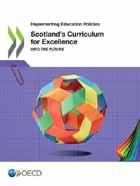
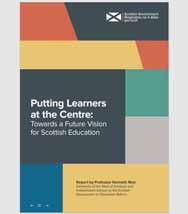
“There are a number of specific areas which are likely to be of particular interest to teachers of Geography.”
As a lover of nature and the environment, and a plant ecologist, I must be honest regarding the scientific evidence in acknowledging that humanity’s activity driving land-use change is the largest force affecting the Earth’s systems. So, while debate persists on whether to formally recognise the Anthropocene as an epoch, the unprecedented risks which face humanity increase unabated. These risks are existential; that is, they will change life as we have known it. They include climate change and biodiversity loss and, inextricably linked to these, human health and nutrition provisioning.
Worldwide agriculture accounts for around 20% of greenhouse gas emissions, and this is largely underpinned by the industrialised food systems and intensive cropping practices of the Global North (including Australia and New Zealand). In this, there is extensive use of synthetic mineral nitrogen fertilisers, phosphorus and pesticides, which are lost to the environment, and so are responsible for pollution and imbalance of nitrogen, phosphorus and water cycles, to disrupt and limit ecological functions and biodiversity.
Consequently, there are calls for ‘food system transformations from farm to fork’, ‘increased corporate responsibility’, the realisation of ‘sustainable consumption’; and so the promise of sustainability and resilience has become the language of modern marketing. Despite this, how to achieve transformation in praxis remains elusive. Additionally, in many of the treatises on such topics, I face confusion and omission. On confusion, there is much talk of the need for ‘food security’, yet in industrialised food systems most of the production is focused on the growing of crops for feed, not direct human-food use, and these feedstocks serve mainly markets for meat, alcohol, biofuel, and aquaculture. So, I think it is critical in such discussions that we endeavour to be honest in this regard. On omissions, too often the cornerstone for practical and positive change is not mentioned at all, which is the necessity to increase ‘food- and feed-independence’ through bio-regionalised legume-based food systems. This is even more relevant given the war in Ukraine, with rising synthetic fertilisers, feed- and foodcosts.
Legumes carry out ‘biological nitrogen fixation’, a process whereby atmospheric nitrogen is fixed into biologically useful forms, negating the need for synthetic nitrogen fertilisers. Among the array of legume crop types, faba beans (Vicia faba L) appear to stand apart historically in cultural and environmental terms. Faba bean is an ancient crop whose domestication and cultivation, originally in the Fertile Crescent of the Middle East and North Africa, is claimed to have been central to the success of human agrarian practices, food security, and so the development of civilisation. Their use has spread through the world, which
has seen faba bean types emerge alongside grain legumes such as peas (Pisum sativus L), lupins (Lupinus species), lentils (Lens culinaris L), chickpeas (Cicer arietinum L), and soybeans (Glyine max (L) Merr), for production as ‘cool season’ crops across Europe.
Currently in the UK, peas and faba beans are the main legume crops cultivated for their grains, which are highly nutritious and offer high levels of protein, carbohydrates, minerals including essential minerals, and many other health promoting ‘non-nutritionals’ such as via polyphenols. A significant proportion of the nitrogen and carbon which faba fix from biological nitrogen fixation and photosynthesis (respectively) are left in campo as post-harvest residues to enrich the cropped system. Also, faba bean presents a sturdy and deeply penetrating tap root, and so the soil quality and functional improvements are delivered throughout the soil profile. Faba bean also offers resources to pollinators, and beneficial insects including the predators of crop pests. You will therefore understand that legume crops such as faba bean offer a means which really can help achieve more sustainable and resilient food systems from farm to fork. However, across Europe these benefits are largely forfeited since the food systems are already grain legume-dependant, but these are imported.
A ‘legend’ in this field was Henry Taylor, who worked at the Scottish Horticultural Research (now James Hutton) Institute. In his position as a Field Trials Officer, Henry cross-pollinated faba bean types which had been gathered from across the globe, to obtain progeny which he hoped would cope with the challenging environment which would be faced by crops in the arable cropping systems which dominate Scotland’s east coast, to create, in his own words, a ‘Scottish Bean’. Henry selected for characters such as rapid and synchronous flowering, small bean-like seeds like peas in shape, and with pale and thin skins. Also, his faba presents a strong stem, and is a dwarf crop type compared to modern commercial varieties, and its flowers are all white: there is not another crop like it in the UK.
I first met Henry in 2017, when he arrived at our reception and had asked to speak with the “bean man”, which was me apparently. I found Henry a humble and gentle man, and he presented me with a small margarine tub containing a handful of his Scottish Bean, and we retired to the staff canteen to discuss their potential. Subsequent field trials confirmed Henry’s claims, and we have seen yields of up to four tonnes per hectare.

“Legumes carry out ‘biological nitrogen fixation’.”Henry Taylor.
species are cultivated in the same field and at the same time, as a ‘plant team’, or ‘crop mixture’. Via biological nitrogen fixation, the bean can meet its own nitrogen demands and that of the non-nitrogen crop too, and the mixed crop yields more per unit area than would be achieved from their monocropping as a single crop-type.
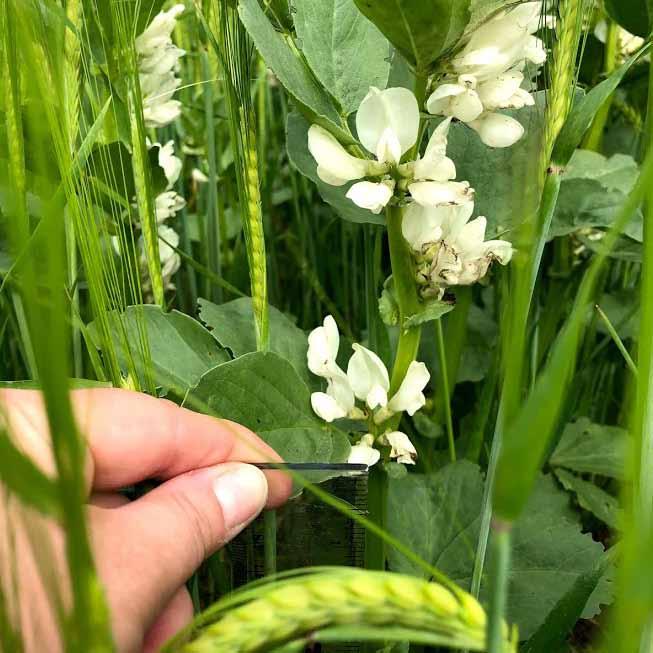
Henry Taylor formally gifted his Scottish Bean to the James Hutton Institute, which continues to develop its potential. This year, one tonne was sown for production on an organic farm close to Dundee, with the intention to have it available to consumers in 2023. Most significantly, perhaps, is that Henry’s legacies highlight the significance one individual can make to help support the development of improved grain legume crop varieties in Scotland, a region which has no formal breeding programme. Also, that he will continue to help foster a greater understanding of what constitutes sustainable crop and food systems, and to encourage positive behavioural change to realise that ideal.
Legumes as a key solution in farming for 1.5°C In the Farming for 1.5°C Inquiry, co-chaired by RSGS Chief Executive Mike Robinson, the use of nitrogen-fixing legumes was identified as one of the critical solutions to reducing the greenhouse gas impact of agriculture. More than 50% of nitrogen is currently wasted, which impacts not just climate but also water integrity and nature. The price of nitrogen fertilisers has shot up enormously since the Ukraine invasion, so this is an increasingly significant but avoidable cost, and nitrogen-fixing legumes are one of the most practical alternatives.
Andrew Barbour, a cattle farmer from Highland Perthshire, told the Inquiry, “I was fully aware of the damage done by fertilisers to habitats, particularly the enrichment of freshwaters. Seeing that problem right in front of me in the loch here made me look more into the issues surrounding nitrogen and phosphorus. There was enough information around to show that a more extensive system could be run without the damaging effect of nitrogen in particular. It was obvious to me that redesigning the system was essential in order to stay in business – to keep both our stock and the environment healthy.”
Iannetta et al (2021) A Multifunctional Solution for Wicked Problems (Frontiers in Sustainable Food Systems, doi. org/10.3389/fsufs.2021.692137)
“Henry Taylor’s Scottish Bean has now gotten attention from faba bean breeders across the world.”Henry Taylor’s Scottish Bean, flowering, in an intercrop with barley.
 Mike Robinson, RSGS Chief Executive
Mike Robinson, RSGS Chief Executive
As one of the most impressive scientists who has made that bridge across to the policy world, do you feel that sometimes the science isn’t enough to move the dial, and that there’s more to be done beyond the research if things are going to change?
What I would like is what everybody at RSGS wants: to have impact, and to make geography real for people to understand all aspects of it and why it’s a fundamental part of our place on the planet. Anywhere that I can add to things, support, be ambassadorial and interact with governments, I’m very happy to do that.
I was born in Arbroath and then moved to Broughty Ferry, just outside Dundee. When I went to secondary school, I started getting very interested in science. It was just like somebody was opening a whole box of chocolates and you could start satisfying your curiosity, because I’ve always been incredibly curious, but I think most kids are. I think we’re all born scientists, and somehow it’s not fed as we get older. In my case, whether it was chemistry, physics, geography, biology, whatever it was, I just wanted to do more of it.
Neither of my parents went to university, partly because my mother had to give up her job when she got married, because it was thought improper for a married woman to still work. But I think, had life been different, she would have most definitely been a scientist. Like me, she just thought it was amazing how knowledge was generated and to see what you could do with it. She could see exactly that journey between generating knowledge and then providing something that was of real use to society, through good communication, and implementation.
I did experiments at a very early age, with taking pea or bean seeds and weighing a pot and the soil and the seed, watering it, and weighing it when it had grown, and being stunned, as I still am, that it was just sunlight and water that captured all that biomass and of course created food. But that was all supported by my parents, and a subscription to Look and Learn magazine.
So what did they make of your very strong scientific career? I don’t know if they were surprised. I think they were very proud of me. You get various setbacks because you’re a woman in an environment that’s predominantly male, and I think they were very proud of how I dealt with it in a way that made it as positive as I possibly could. A sadness to me is that my mother died before she could see me become first Chief Scientific Adviser for Scotland.
I am very keen on the fact that young people, regardless of their gender or their ethnicity, are supported to be able to achieve all they can, and that we don’t put up barriers to prevent that. And there are still too many barriers, because there are not enough role models.
I work at the University of Strathclyde, and one of the reasons I was attracted to come here is because there is a very strong statement here about values, and how people should expect to be treated, and how they should be supported, and how they can achieve their best.
I had a fantastic PhD supervisor, and he said all sorts of wonderful things to me that I’ve never forgotten. The most important one is ‘research not communicated is research not done’. I feel that there’s an obligation, if you’re being funded by public funds, to make sure the public get the value of it. Whether that means pitching up and giving a talk to the general public, or going to science festivals, or writing articles in newspapers, or going to schools, I think you have to do that and see that knowledge made useful.
I really enjoy challenge. I like being put in an environment that I’m not entirely comfortable in. A colleague of mine had seen that Scottish Government were advertising for a chief scientific adviser, the first time they created the role, and he said “You’d be good at that.”
A lot of government policies are driven by political philosophy, but you need an evidence base there, or else it’s just philosophy and that’s going to make for a very fragile policy. I was interested in thinking, “How can you make evidence available, useful and easily accessible to policymakers and politicians?” Because there’s no use in standing on the sidelines and complaining about policies if you don’t contribute to thinking “So how can I get the most appropriate knowledge in front of the people who would find it very valuable in making those policies?” So it was a natural progression for me, and one that I’ve never regretted.
You were a molecular biologist. I think you described yourself as a reductionist. How do you correlate that with being President of a geographical society, which I think is not very reductionist?
It isn’t. For me, it’s definitely ‘big picture’, and I would say that’s part of the attraction. The way I see it is it’s all about systems. You can research a tiny molecule until you go blue in the face, but unless you know what it’s interacting with, and what connections and impact that then has in a system sense, it’s of little value. For me, that’s what geography is. It’s all about systems. I don’t see it as contradictory to my research career, because the approach is the same. I just think in geography the impact is much bigger.
Life is very complex, so you have to balance competing demands. This is the real challenge for a policymaker. You might provide the scientific evidence, but they will say, “so what? I have to think of economic, social, ethical, political, philosophical issues that need to combine to make that an effective and acceptable policy.” In life, I think it’s helpful for me to have a few tests: “So what?” is a good one, and “What’s
“I’ve always been incredibly curious.”
the worst that can happen?” is the other. What’s attractive about RSGS to me is that it is about big thinking. The disciplines that come under the banner of geography cover so much about the big challenges facing the planet, whether it’s managing water, climate change or migration. The reach that RSGS has, both nationally and internationally, is incredibly impressive; it’s one you would expect an organisation with dozens of staff and huge amounts of resource to have. The RSGS talks that I’ve been to over the years were standing-room only, and that’s because people are really open to what comes under the banner of geography, and RSGS is seen as credible and trusted. And that’s the platform on which you can have meaningful conversations with policymakers, with business, with educationalists, with a civic society, about what options there are to do things differently that might have better outcomes. Both for us as people, but also for our planet. So, the opportunity to be part of that, and to lend any support I can to these different objectives that RSGS does, is a tremendous opportunity. Not one necessarily that I thought would ever
come my way, but I’m so pleased that it did. When you get to my stage in my career, you only do things because you really want to do them, not because you have to. I do things now only because I’m really interested, and I look at the people I will be working with. And that is the case for RSGS, because of what you do and how RSGS has been positioned, not just in Scotland but globally. It seems like a generous organisation where people are happy to contribute expertise and time – the most valuable thing – and why wouldn’t you want to get involved with that?
Professor Glover is a distinguished biologist, geneticist, and former Chief Scientific Adviser first to the Scottish Government and then to the President of the European Commission. Her leadership in the field of scientific advice, and her ability to communicate science to the highest political and decision-making levels, are widely recognised. She became an RSGS Vice-President in 2017, and RSGS President in March 2022.
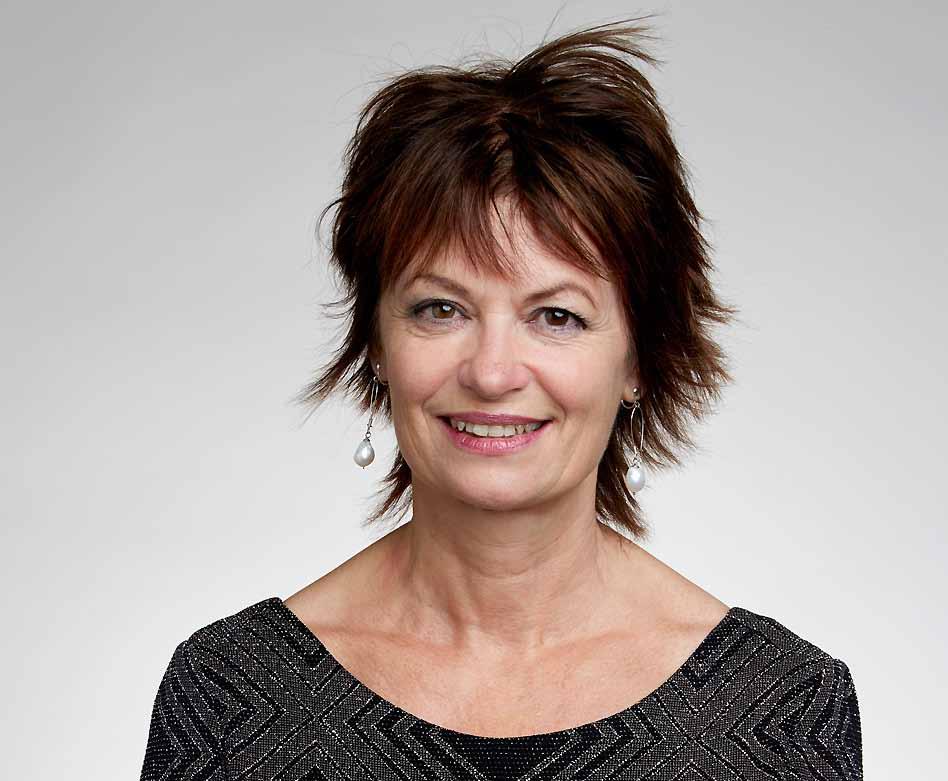
“Life is very complex, so you have to balance competing demands.”
It wasn’t the most auspicious start to a plant-collecting expedition. In April 1933, George Sherriff and his friend Frank Ludlow were staying at the British Residency in Gangtok, the capital of Sikkim. Both keen botanists, they couldn’t resist exploring the gardens in search of rare plants. But leeches pursued them in their thousands, making it impossible to venture off the path. Then, one morning, a storm shredded the leaves on the trees and buried all the flowers beneath several inches of hail. When they set off for the Chumbi Valley a few days later, they hoped that they were leaving the worst of the weather – and the leeches – behind them. They were wrong. George Sherriff was born in Larbert in 1898; his father was a businessman and his mother was a keen gardener. Educated at Sedbergh School, he received military training at Woolwich and then served in the Royal Garrison Artillery during World War I. Afterwards, he was posted to India and then, between 1927 and 1931, he served as British Vice-Consul in Kashgar, Chinese Turkestan.
It was in Kashgar that Sherriff met Frank Ludlow, a naturalist and retired army officer. With their shared love of botany the two became firm friends, and together they started planning a plant-hunting expedition into northern Bhutan and southeastern Tibet. Their intended route would take them over hazardous mountain passes and through dense forests that were rarely visited and poorly mapped. Fortunately, they had some influential connections, chief among them the Prime Minister of the Maharaja of Bhutan. The Minister, known to them as Tobgye, owned some of the land that Sherriff and Ludlow planned to explore; he recommended two Bhutanese men, Pintso and Tendup, who could act as interpreters and assistant collectors, and he even arranged for some campsites to be set up in advance.
On 5th May, the little party of men and mules were climbing slowly out of Gangtok. Zones of fig trees and bamboo gave way to rhododendrons and magnolias, all bursting into magnificent flower. They soon reached the glacial lake at Changu (Lake Tsomgo) but were held up for a week by heavy snow on the Nathu La, a mountain pass at an altitude of 14,000 feet. Once safely across, among their first finds was Rhododendron cinnabarinum, glowing in hues of clear yellow, orange and salmon pink. In the Ha valley, Sherriff was delighted to discover the deep claret-red Primula kingii, which he and Ludlow later introduced into cultivation in Britain.
As they progressed into the Paro valley, they gazed in awe at the ‘Tiger’s Nest’ monastery of Taktsang, which seemed to balance in mid-air on a vertical limestone cliff. A narrow, snaking path led up to the monastery, from which they peered down into the ravine, some 700 feet below. They crossed the hot, dry valley of Mo Chu and plunged back into the forest, where torrential rain turned the ground to mud, and leeches were rampant. Bites on Ludlow’s feet would not stop bleeding, and when they stopped to camp they even found a leech on their soup bowl, eagerly searching for a victim.
At Bumthang, where the Maharaja had a summer residence, the bedraggled explorers were welcomed by the Maharaja himself and his family, who entertained them in lavish style with daily contests in archery, football, racing and wrestling, followed by grand dinners. When Sherriff and Ludlow eventually moved on, the contrast in their activities must have been almost comical. On foot, they toiled up and down precipitous hillsides, leading the mules because of the risk of slipping; then, soaked to the skin, they arrived at campsites that were little more than

“Torrential rain turned the ground to mud, and leeches were rampant.”Taktsang monastery.
quagmires. Somehow, they then had to carefully dry, press and record the specimens that they had collected that day. Ludlow had a second interest, which was ornithology; he enthusiastically shot and then skinned unusual bird specimens ready for despatch to the British Museum. As they crossed largely unexplored territory, Sherriff and Ludlow were not only making botanical discoveries but they were also amending the maps of the Survey of India. They were the first Europeans to visit Pomo Tso, a lake at an altitude of 16,200 feet; celebrating this achievement was possibly deferred to a later date, as they were pelted with hailstones and shivered in front of a smouldering fire of yak dung. Rivers fed by glaciers thundered through deep gorges, and to cross them they had to navigate flimsy-looking bamboo bridges with planks only a foot wide, which posed great problems for the mules. Halting at an unusually dry campsite amid open grassy slopes, the party basked in a temporary burst of sunshine but found that the leeches had given way to lice and fleas. These irritations were temporarily forgotten, however, when they arrived at Me La, ‘the Pass of the Flowers’, on the border between Bhutan and Tibet. Here was a botanist’s paradise: brilliant yellow trollius and potentilla mingled with deep blue gentians, pink arenaria, sky-blue poppies and white cassiope. Sherriff wrote in excitement: “Some of the primulas, androsaces and saxifrages are beautiful and I hope one or two will prove to be new.” Over the next week, nine different varieties of primula were found, including one, Primula jigmediana, which was named in honour of the Maharaja of Bhutan (Jigme Wangchuck). Largely because of their profusion on the Me La, primulas later became a particular passion for both collectors.
With their plant presses bulging, Sherriff and Ludlow picked their way over the knife-edge pass of Kang La, which took eight hours to traverse. Here they stopped to gather Delphinium grandiflorum and a greenish-white gentian, Gentiana lhakhangensis. By a glacial lake they found the scented, ivory-white flowers of Primula eburnea, described as ‘the gem of the eastern Himalaya’. Sherriff was so keen to collect it that, as well as taking rooted plants, he tied small bags in situ over the heads of fading flowers in the hope of sending someone back in autumn for the seeds.
They were heading for home by now, and Sherriff could even joke about the leeches. He wrote: “Today I had what I hope will be my last leech bite. He got through my long boots, somehow. When Ludlow saw it he rather laughed and said that I should wear breeches, not shorts, and then they wouldn’t get at me… However, I had the laugh on him, for
George Sherriff was a guest lecturer for RSGS in 1951 and 1954, giving talks entitled Wanderings in Tibet
With thanks to RSGS member Murdo McEwan, who met Sherriff and shared the story about Betty’s dream poppy.
when he took off his boots and socks there was a fine fat one, in his sock…”
More than five months after they set out, Sherriff and Ludlow arrived back in Gangtok with over 500 plant specimens, several of which were new to science. They would go on to enjoy many more expeditions together; some were sponsored by the British Museum, but most were funded by Sherriff himself. After the Second World War, both he and Ludlow served at the British Mission in Lhasa, and they were therefore ideally placed for ventures into the Himalayas.

It seems that Sherriff and Ludlow always got on well together, despite the gruelling conditions. Sherriff remembered that they had “mild arguments” about questions such as altitude, but it was all very amicable and respectful. With his military training, Sherriff was so well organised that he would sometimes arrange in advance for vegetables to be grown at key points along their intended route, so that they had a reliable source of food.
Some of the plants that Sherriff and Ludlow collected were first grown in Perthshire, at Branklyn Garden and Keillour Castle. Later, in the grounds of their home at Ascreavie in Angus, Sherriff and his wife, Betty, created a Himalayan garden with many varieties of primulas, rhododendrons and poppies.
Betty Sherriff became an avid plant collector herself, and joined her husband in 1949 when he returned with Frank Ludlow to the Pass of the Flowers. One night, she dreamed that Sherriff (who had gone ahead to meet Ludlow) gave her precise directions on where to find Meconopsis grandis, a stunning blue poppy. The next morning she insisted on following the directions, and to her delight – and her companions’ astonishment – she found a group of them, exactly as predicted. When this plant eventually flowered in Scotland, it became known as ‘Betty’s Dream Poppy’.

A Quest of Flowers: the Plant Explorations of Frank Ludlow and George Sherriff, by Harold R Fletcher (1975)
“Here was a botanist’s paradise.”Meconopsis grandis
Dr
PaulMorland (Picador, March 2022)
The great forces of population change – the balance of births, deaths and migrations – have made the world what it is today. They have determined which countries are superpowers and which languish in relative obscurity, which economies top the international league tables and which are at best also-rans. The same forces that have shaped our past and present are shaping our future. Illustrating this through ten illuminating indicators, from the fertility rate in Singapore (one) to the median age in Catalonia (forty-three), Morland shows how demography is both a powerful and an under-appreciated lens through which to view the global transformations that are currently underway.
Erika Fatland (author), Kari Dickson (translator) (MacLehose Press, October 2020)
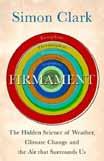


Social anthropologist Erika Fatland, a sharp observer and an outstanding interviewer at the forefront of Nordic non-fiction, journeys along the seemingly endless Russian border, from North Korea in the Far East through Russia’s bordering states in Asia and the Caucasus, crossing the Caspian Ocean and the Black Sea along the way. This is a book about Russia and Russian history without its author ever entering Russia itself; a book about being the neighbour of that mighty, expanding empire throughout history. It is a chronicle of the colourful, exciting, tragic and often unbelievable histories of these bordering nations, their cultures, their people, their landscapes.
Ordnance Survey (Trapeze, November 2021)
Discover the earliest recorded footsteps of humans in Britain, the spot where Caesar first surveyed Britannia, the beaches where the battle of 1066 took place, and on through some of the most iconic moments in British history, and some less well-known historical treasures! With 40 new regional maps and hundreds of puzzles, mind-boggling brainteasers, navigational tests, word games, code-crackers, anagrams and mathematical conundrums, and with maps covering the whole of the UK and puzzles ranging across four levels of difficulty, this is an adventure for all the family.
Readers of The Geographer can buy The OS Journey Through Time for only £13.59 (RRP £16.99) with FREE UK P&P. To order, please visit shop.ordnancesurvey.co.uk/books/activity-books/puzzlebooks and quote code ‘OSJFFTPB’. You can also enjoy on-site savings across the other three books in this award-winning range.
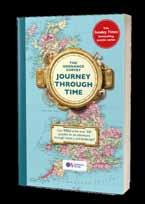
RSGS: a better way to see the world
Phone 01738 455050 or visit www.rsgs.org to join the RSGS.
Lord John Murray House, 15-19 North Port, Perth, PH1 5LU Charity SC015599
Devi Sridhar (Viking, April 2022)
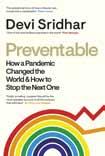
Professor Devi Sridhar highlights lessons learned from outbreaks past and present in a narrative that traces the Covid-19 pandemic, and sets out a vision for how we can better protect ourselves from the inevitable health crises to come. She exposes the varied realities of those affected, puts you in the room with key decision makers at crucial moments, and conveys the twists and turns of a plot that saw deadlier variants emerge, the false narrative of health versus economy, and the quickest development of game-changing vaccines in history. Combining science, politics, ethics and economics, she dissects the global structures that determine our fate, and reveals the economic and social inequalities at their heart.

Simon Clark (Hodder & Stoughton, January 2022)
A thin, invisible layer of air surrounds the Earth, sustaining all known life on the planet and creating the unique climates and weather patterns that make each part of the world different. Atmospheric scientist and science communicator Simon Clark offers a rare and accessible tour of the ins and outs of the atmosphere and how we know what we know about it, from the workings of its different layers to why carbon dioxide is special, from pioneers like Pascal to the unsung heroes working in the field to help us understand climate change.

Thor Hanson (Icon Books, February 2022)
This is the first major book by a biologist to focus on the fascinating story of how the natural world is adjusting, adapting, and sometimes measurably evolving in response to climate change. Hanson shows how Caribbean lizards have grown larger toe pads to grip trees more tightly during frequent hurricanes, and how the ‘plasticity’ of squid has allowed them to change their body size and breeding habits to cope with altered sea temperatures. Plants and animals have a great deal to teach us about the nature of what comes next, because for many of them, and also for many of us, that world is already here.